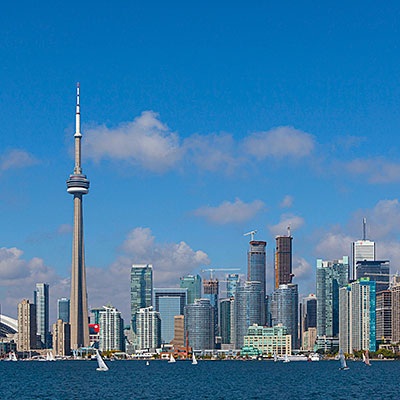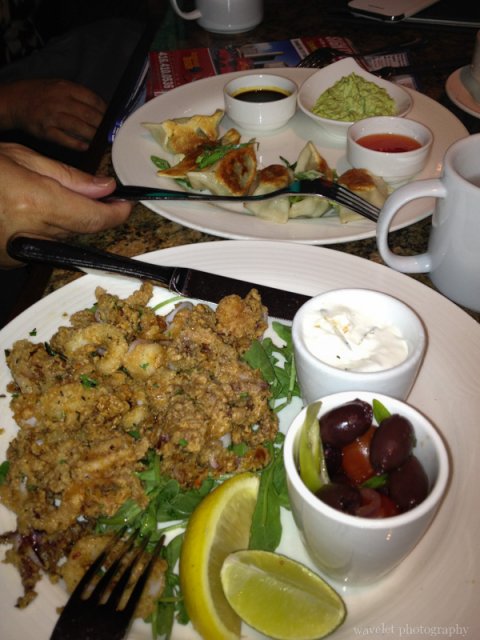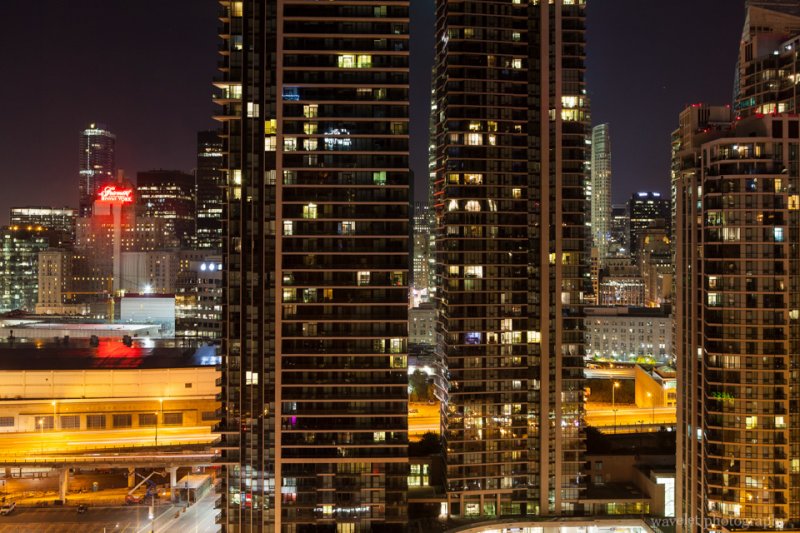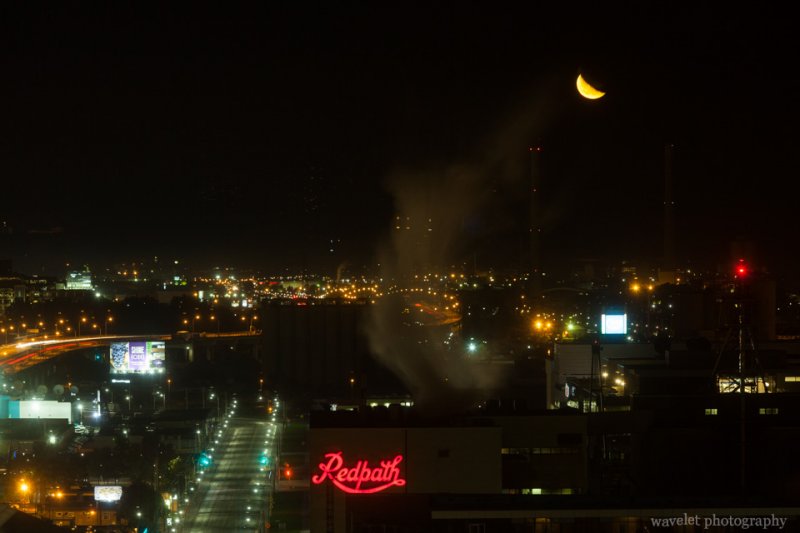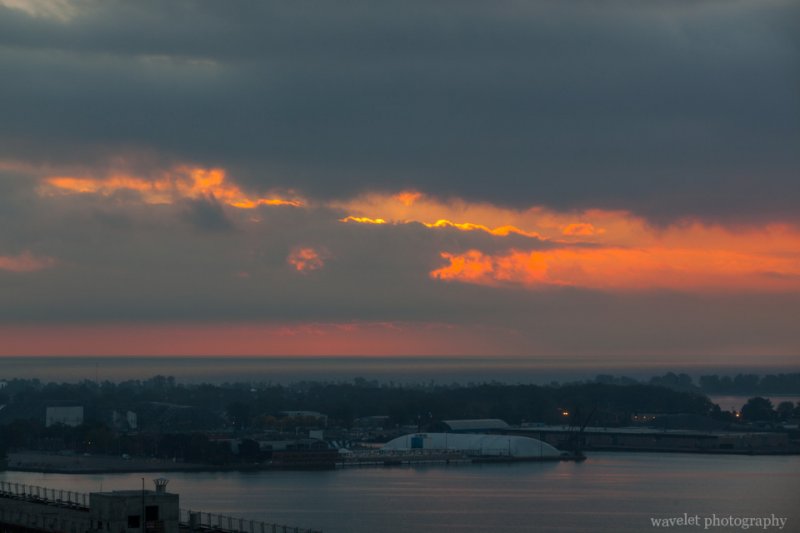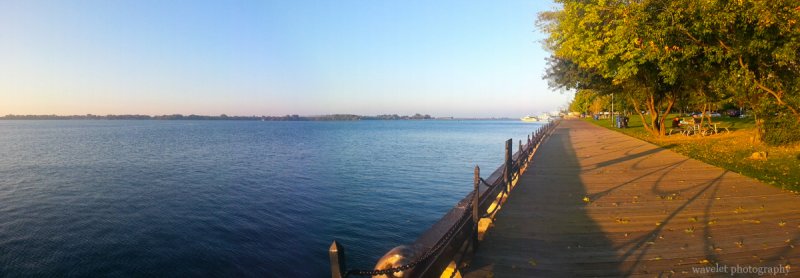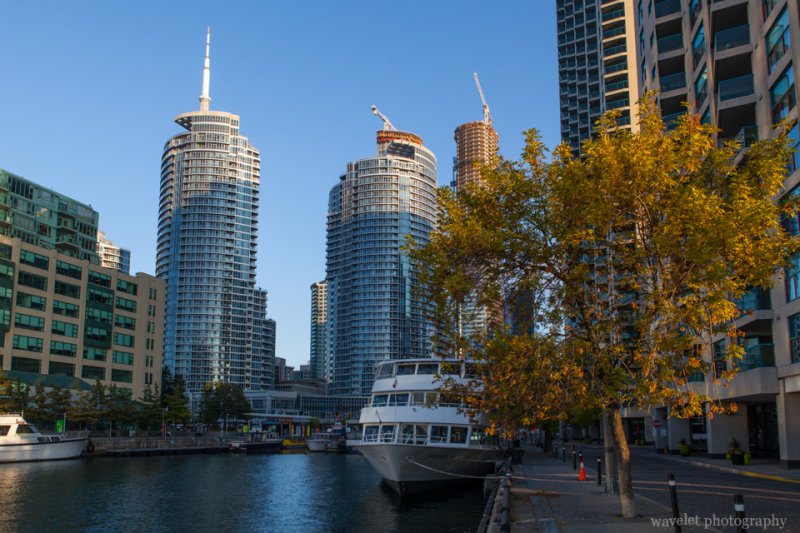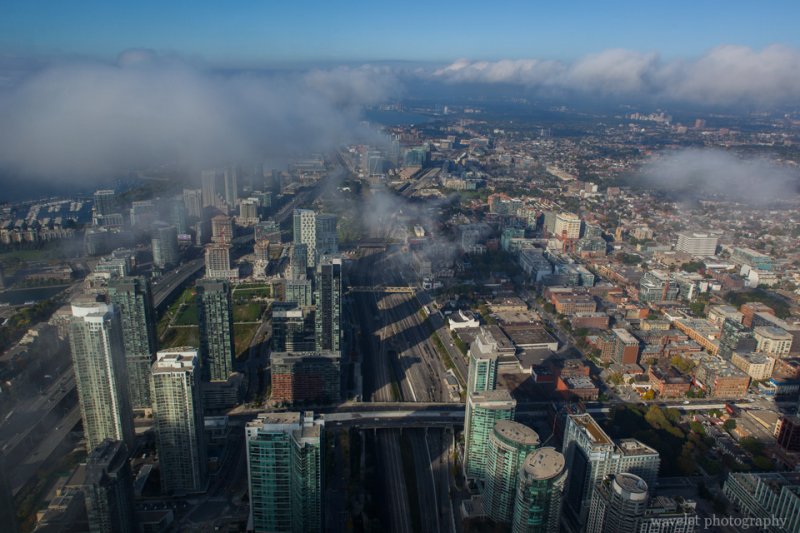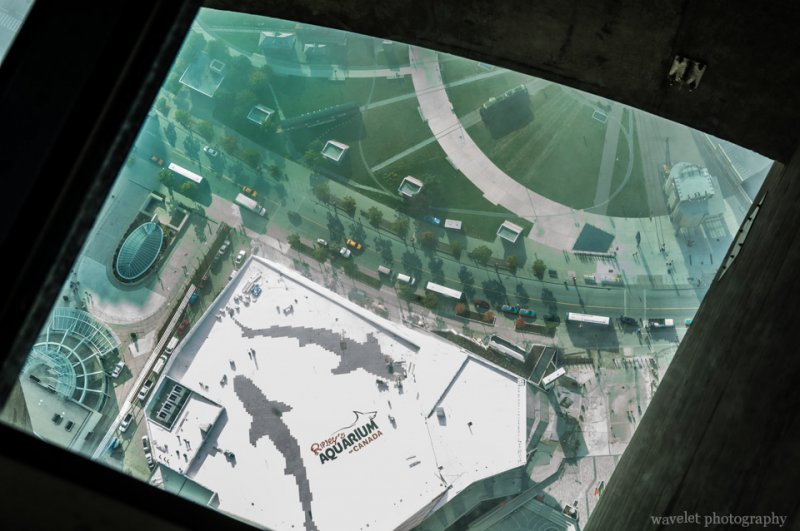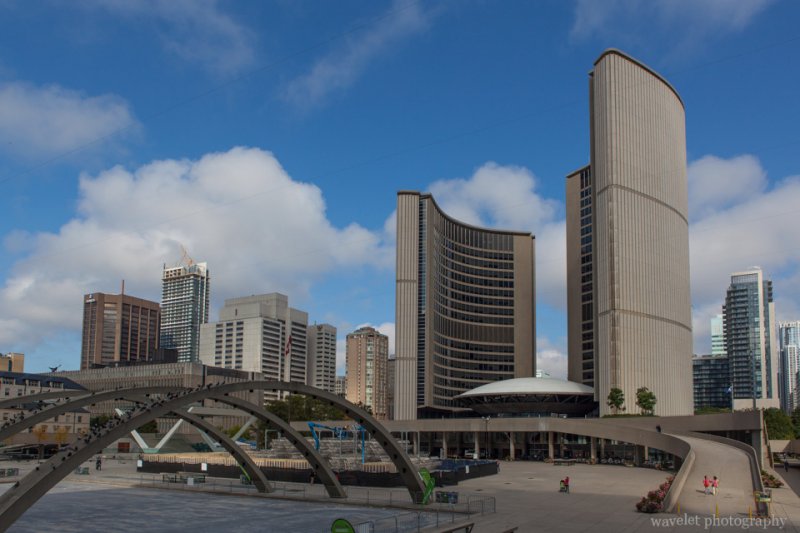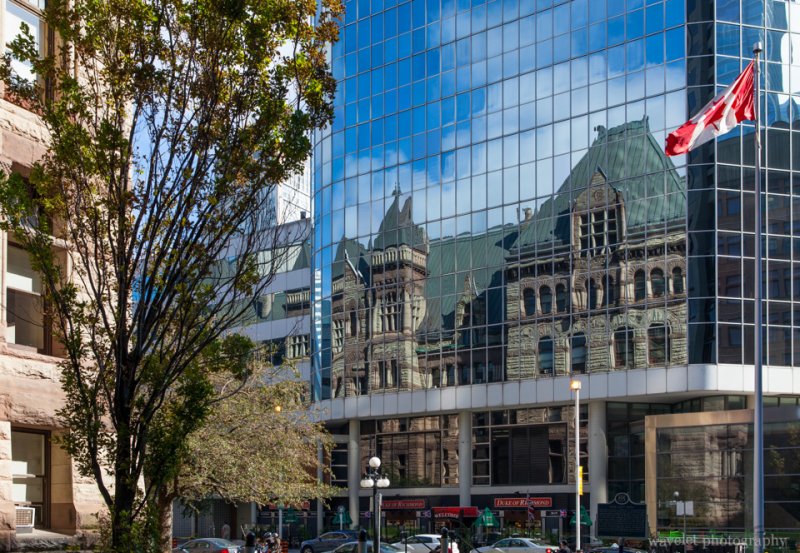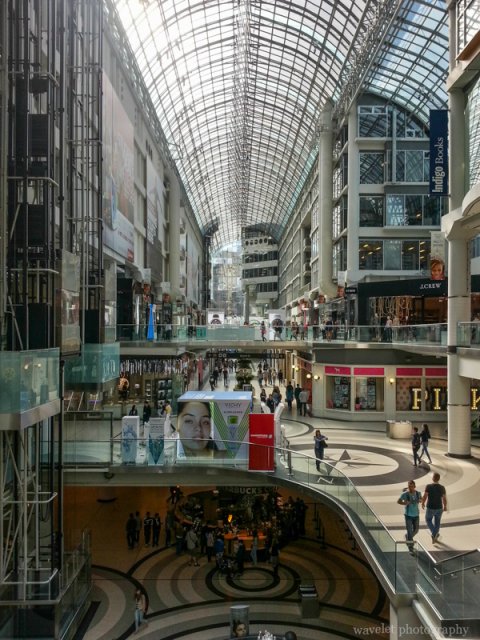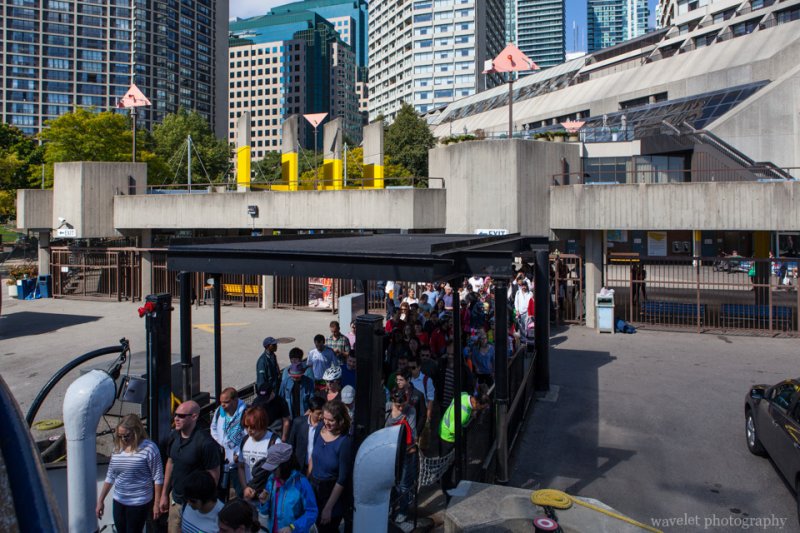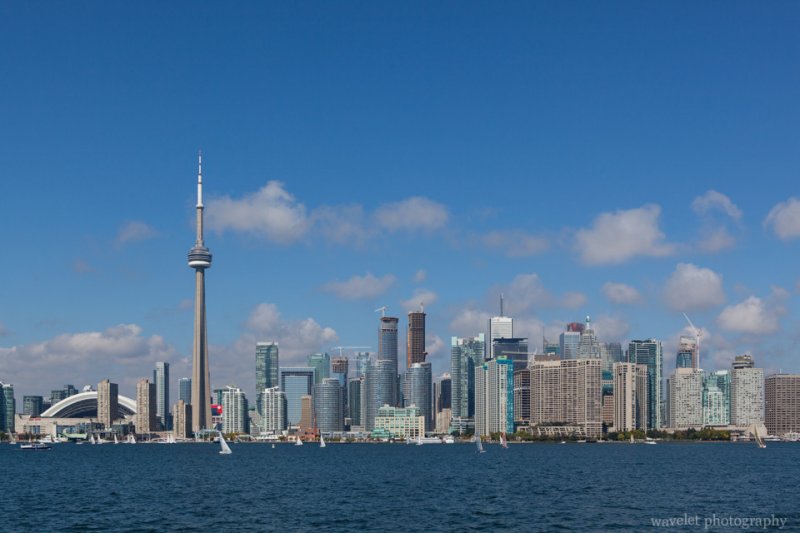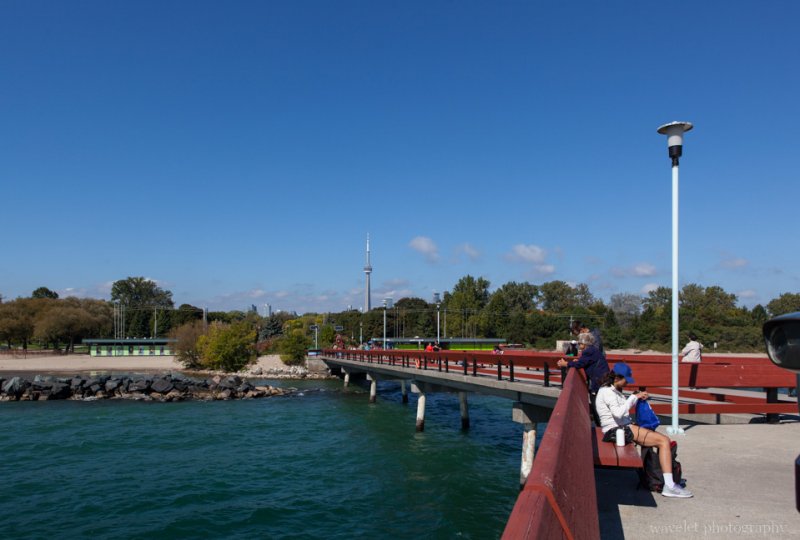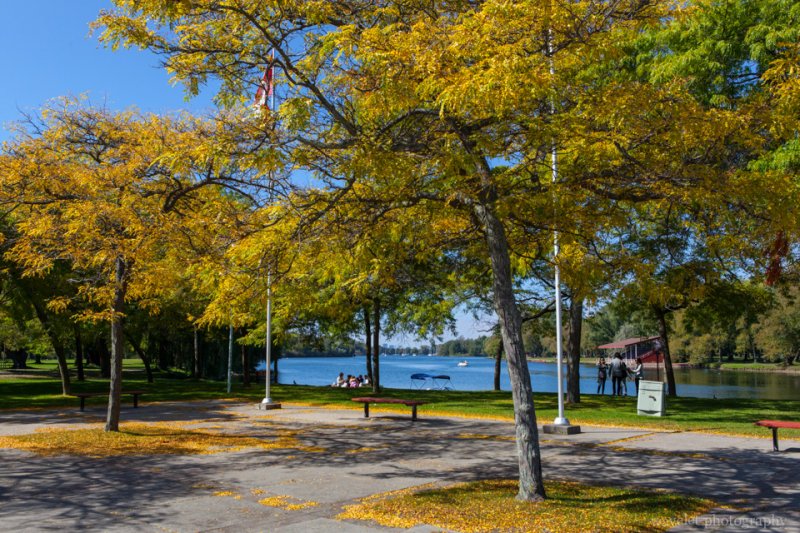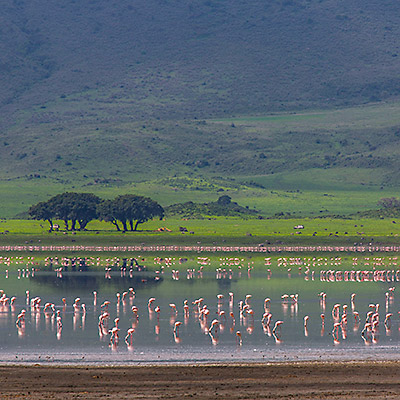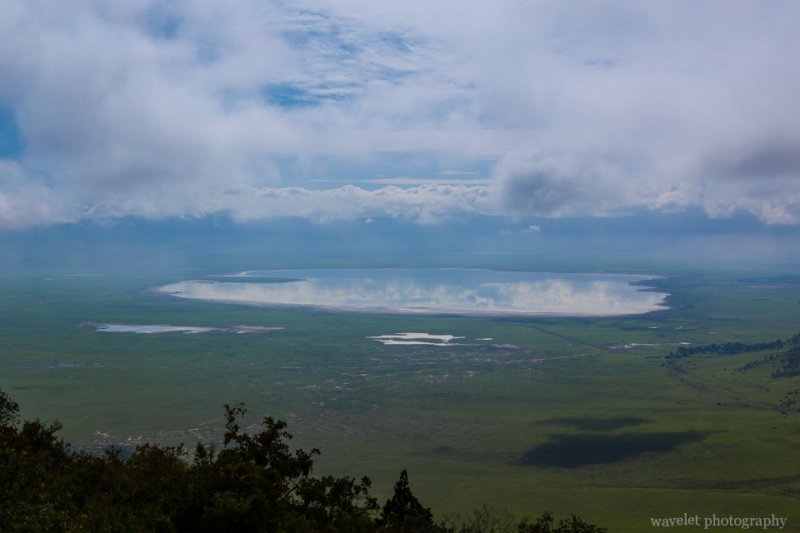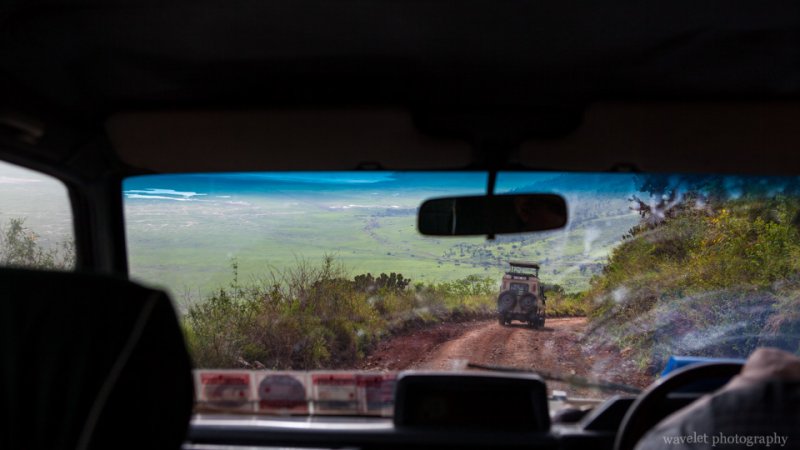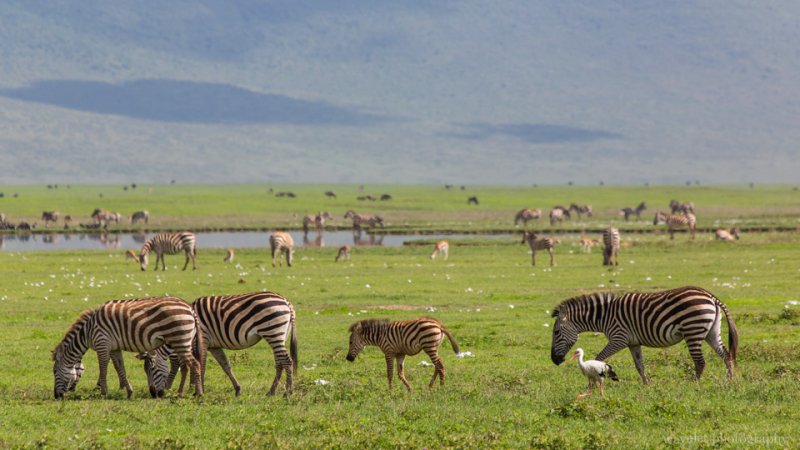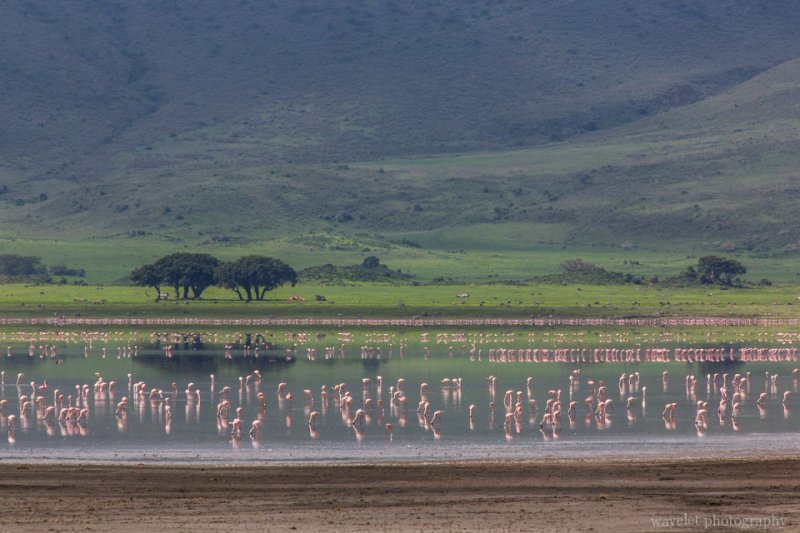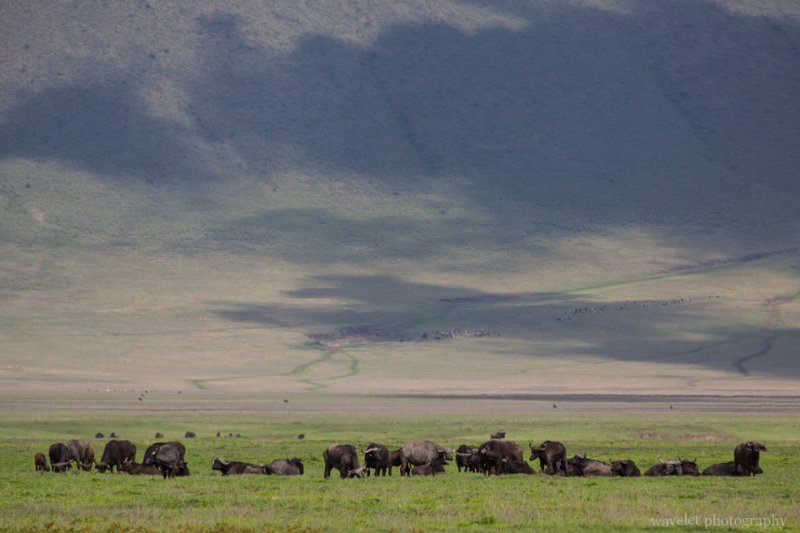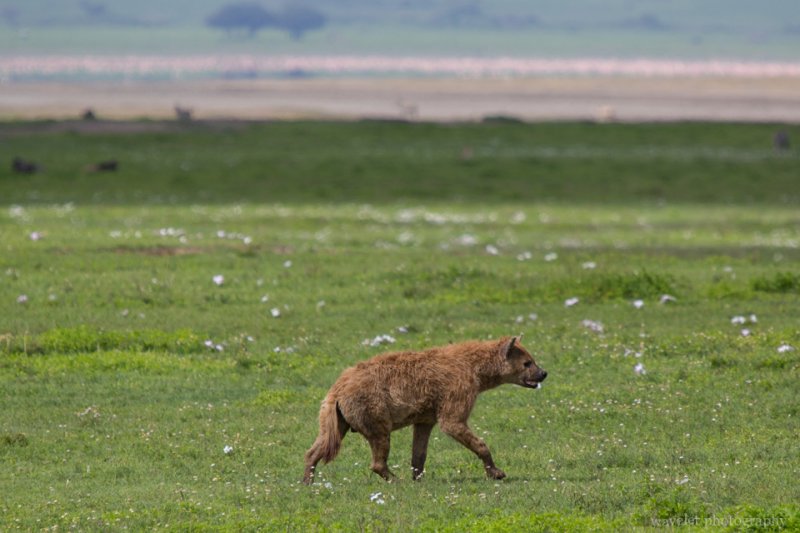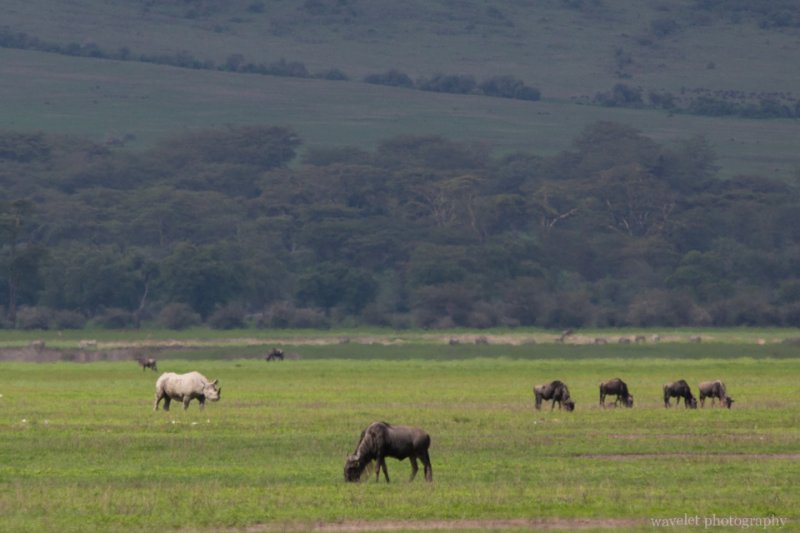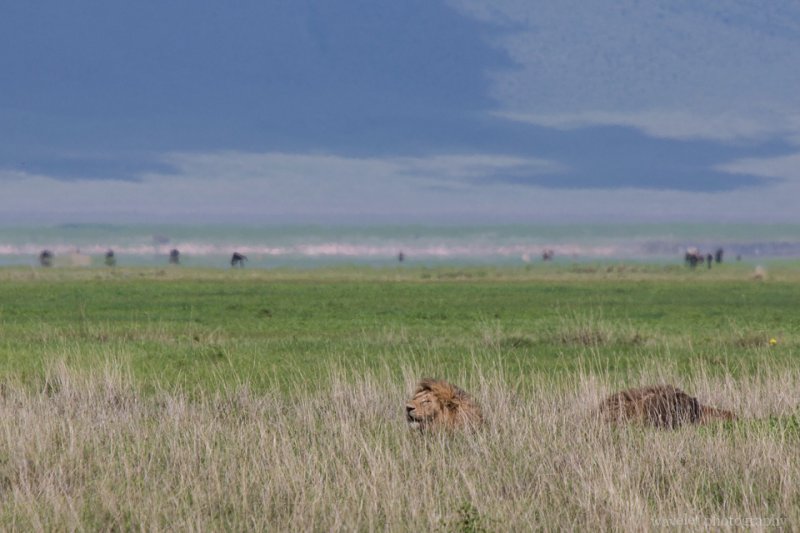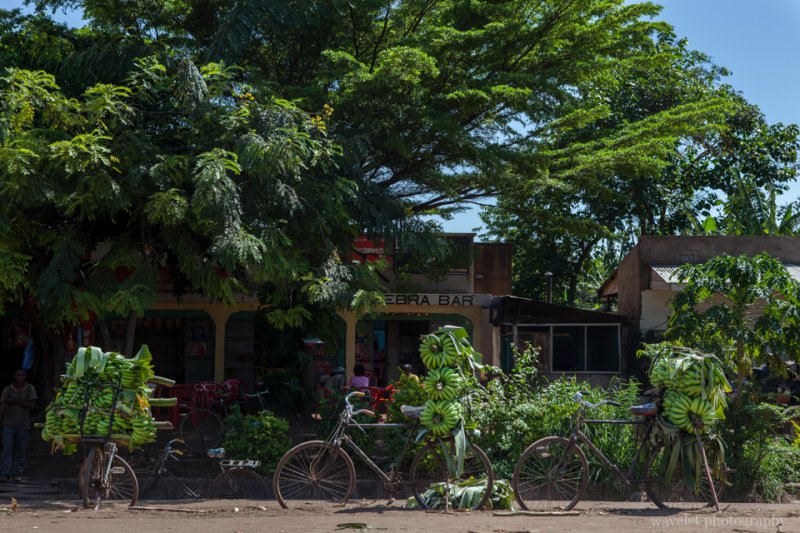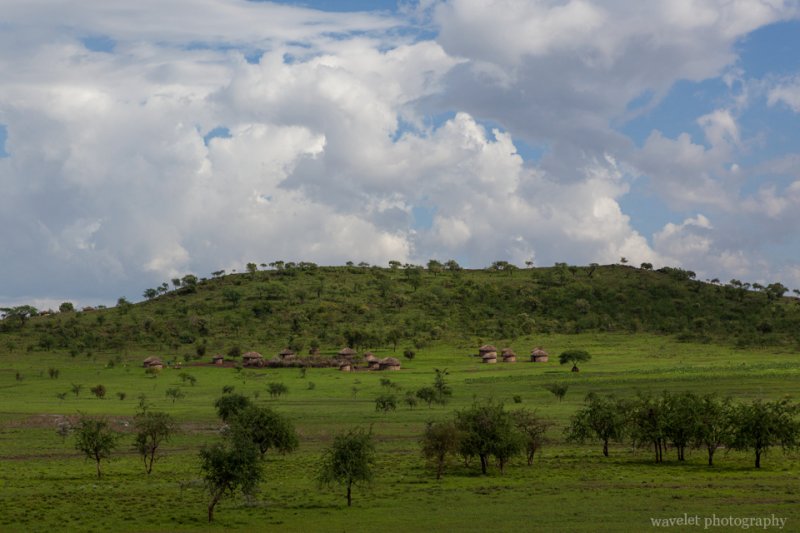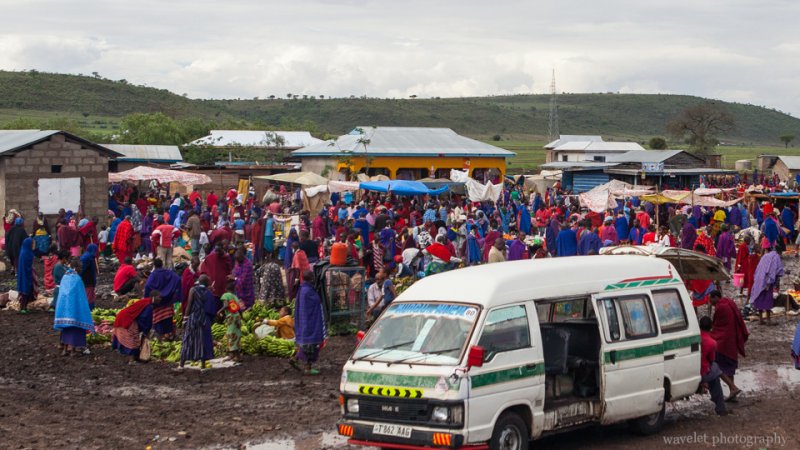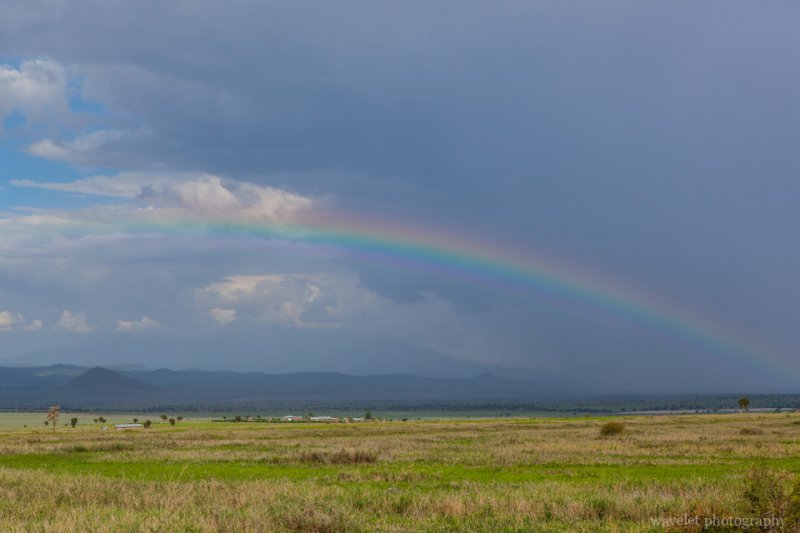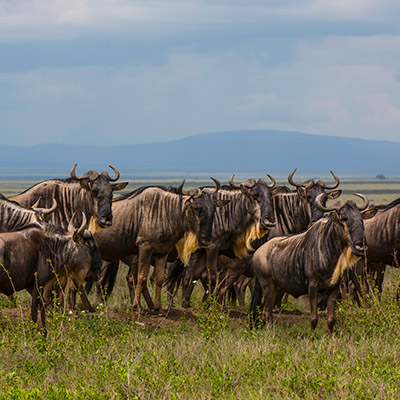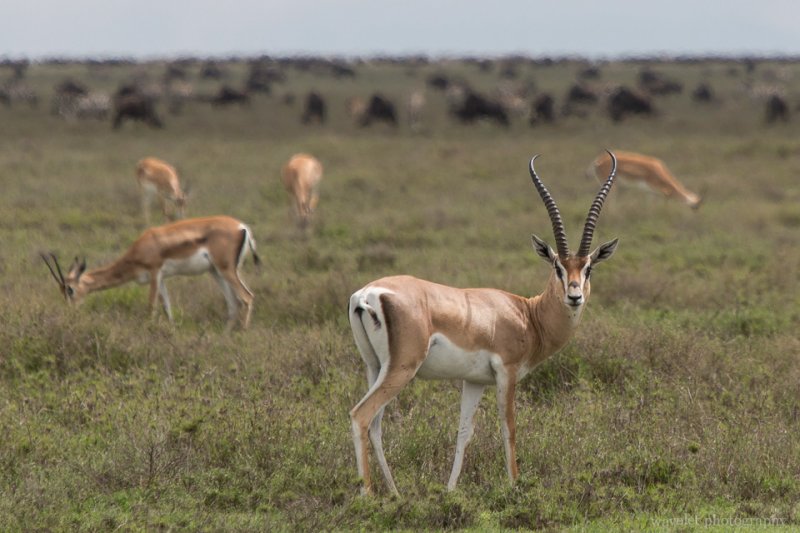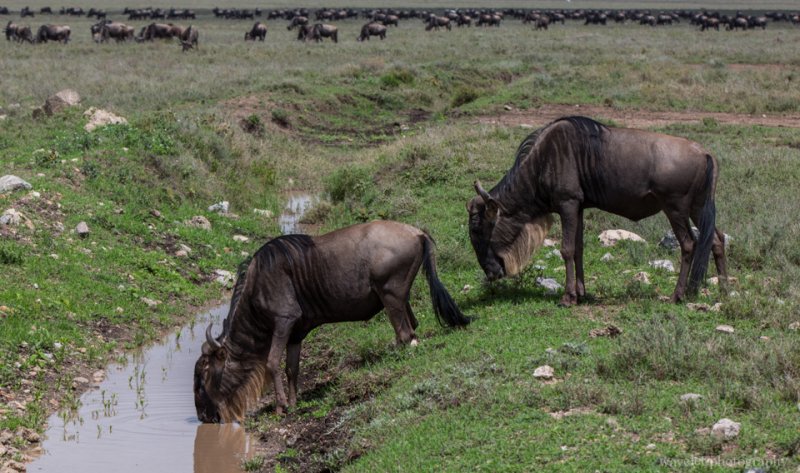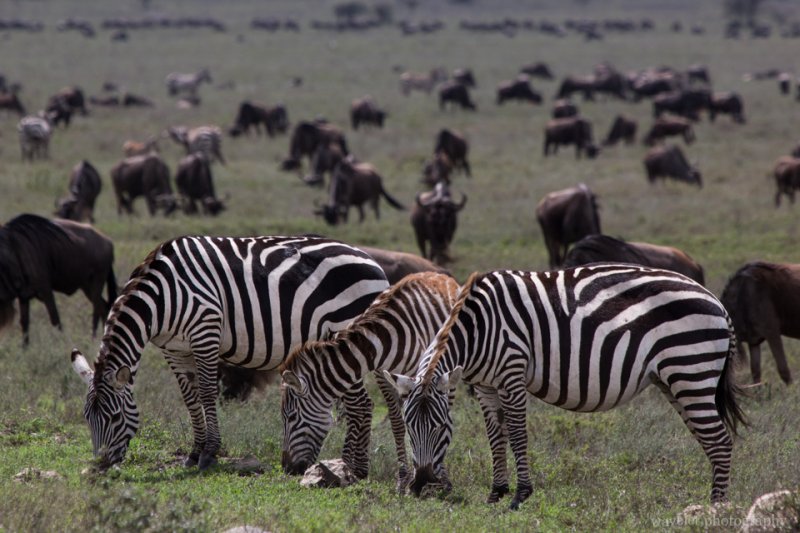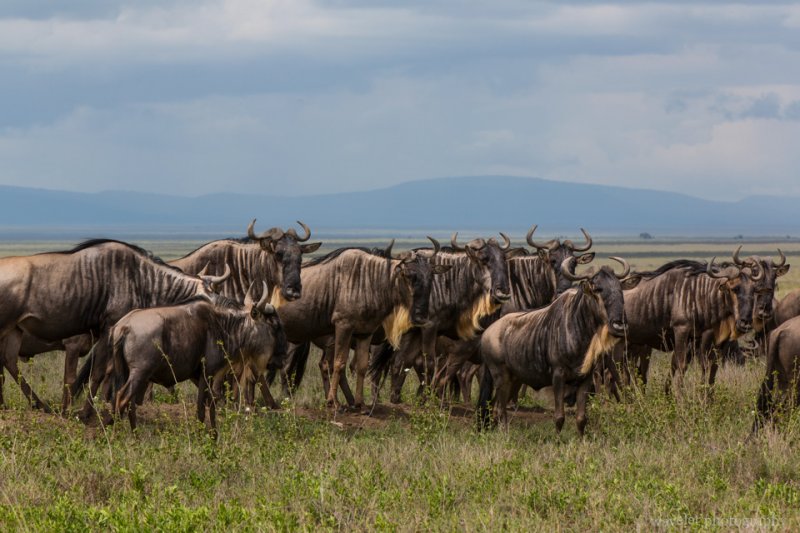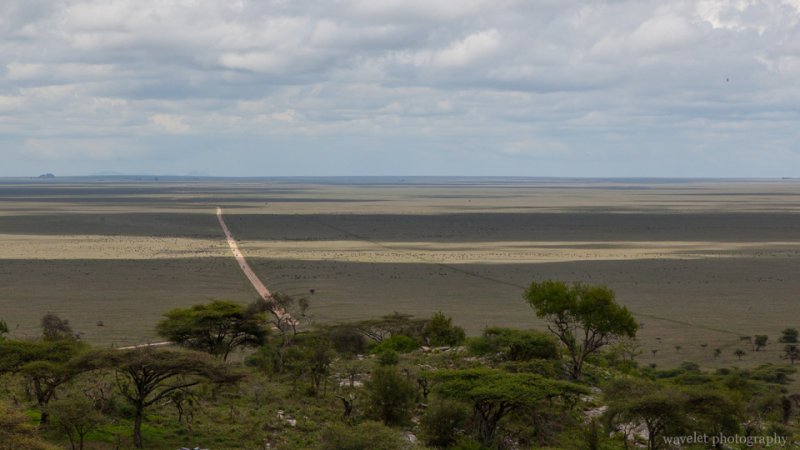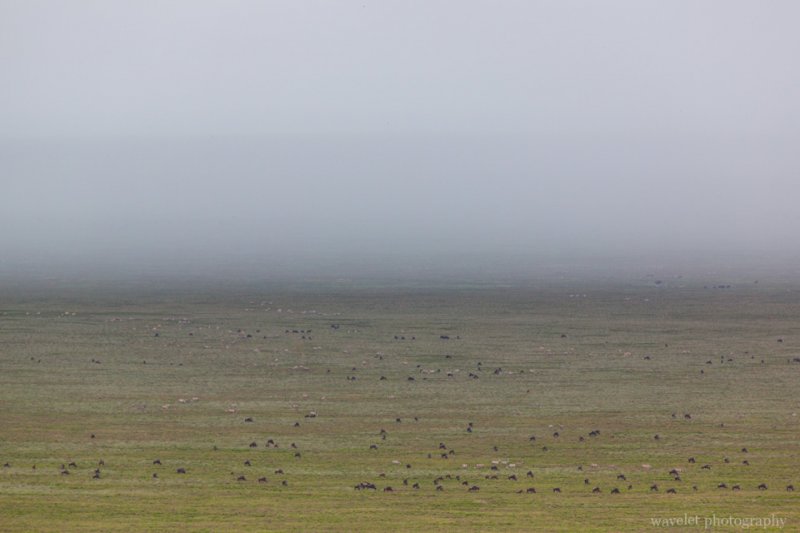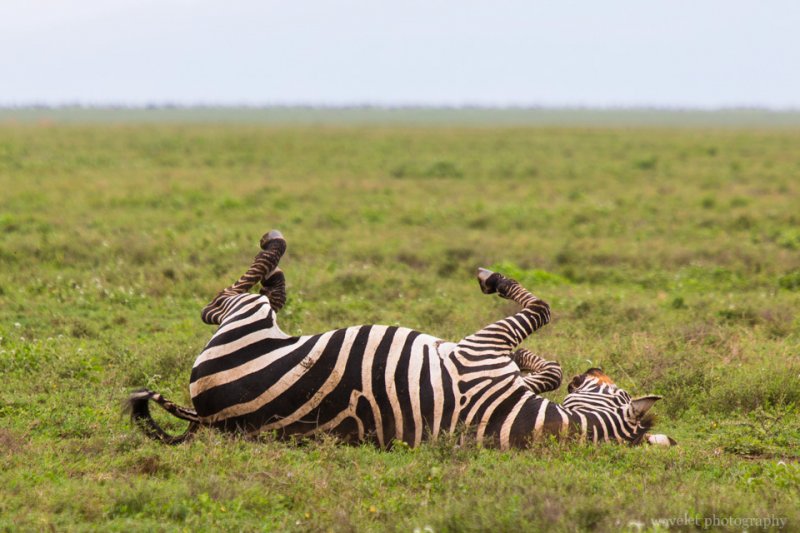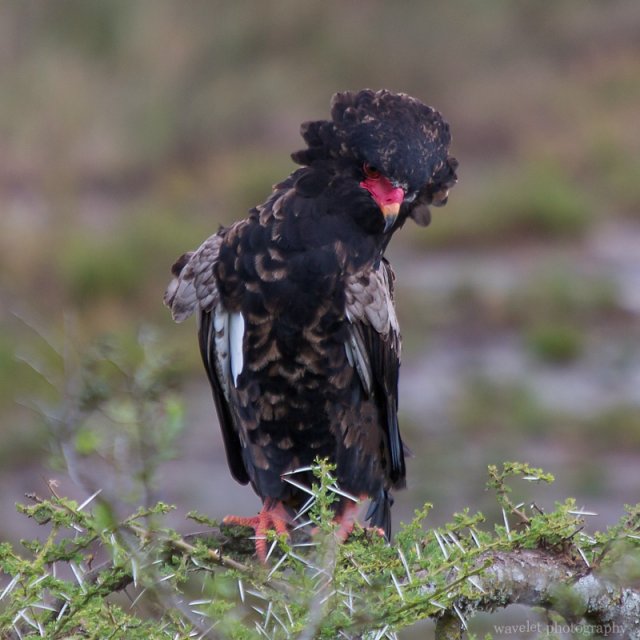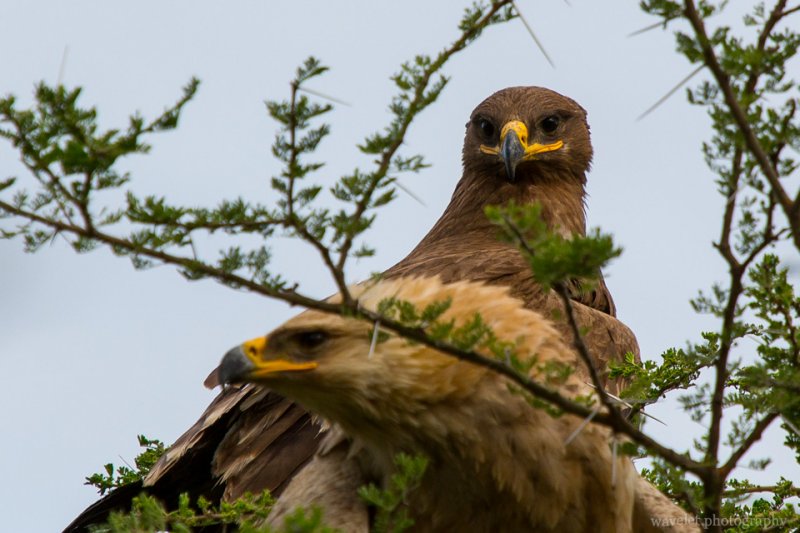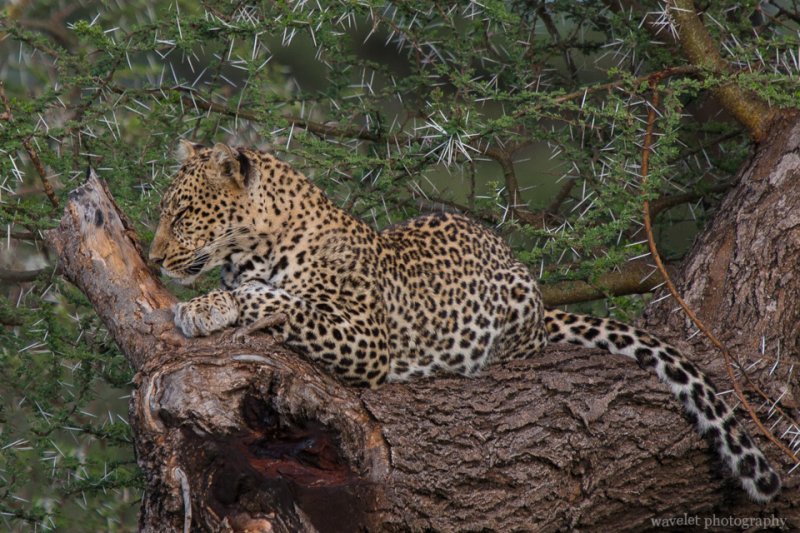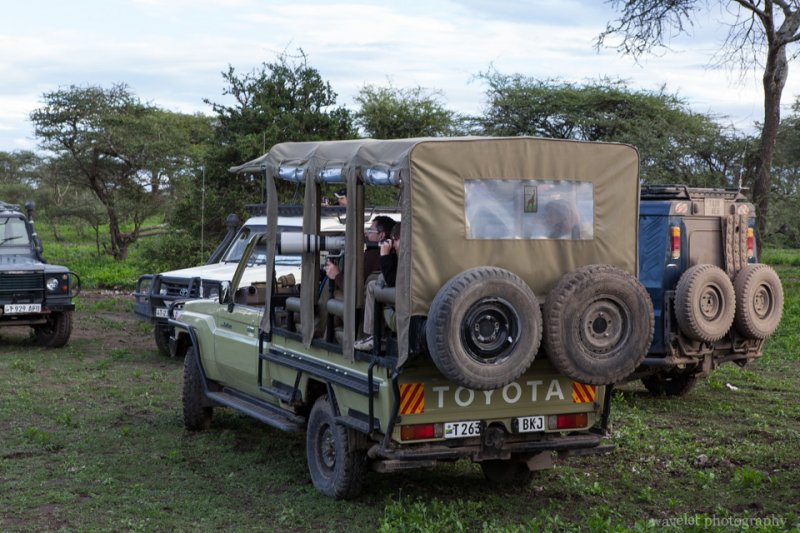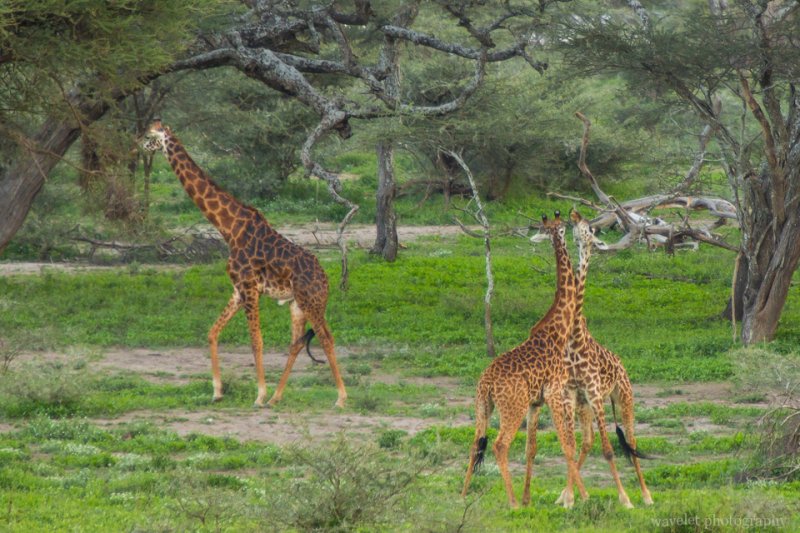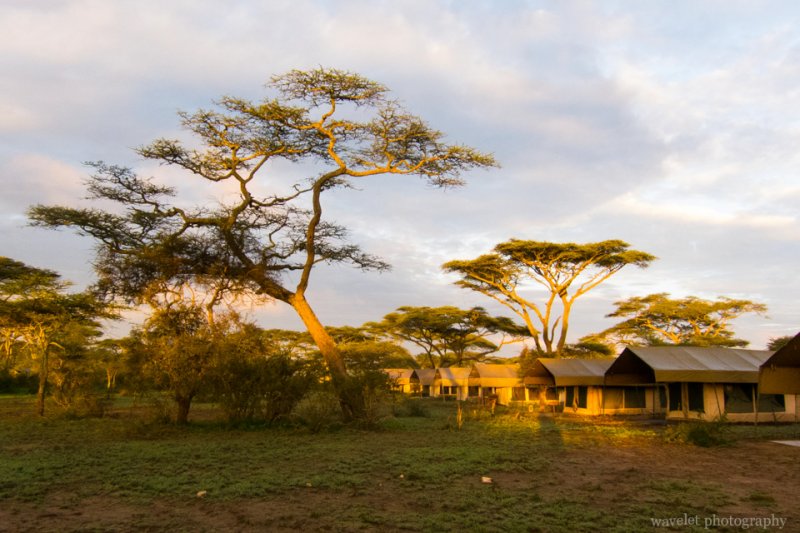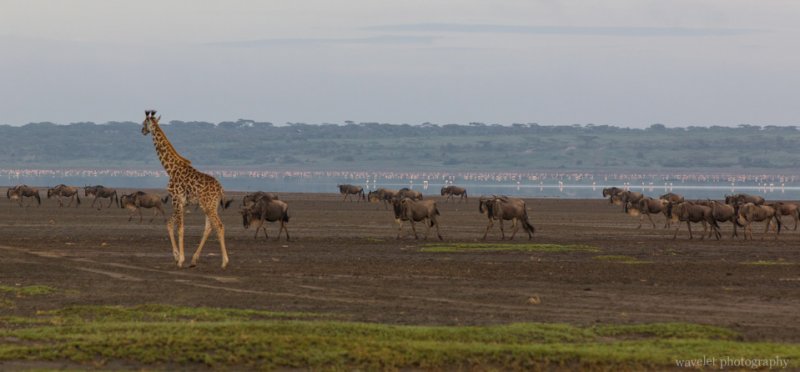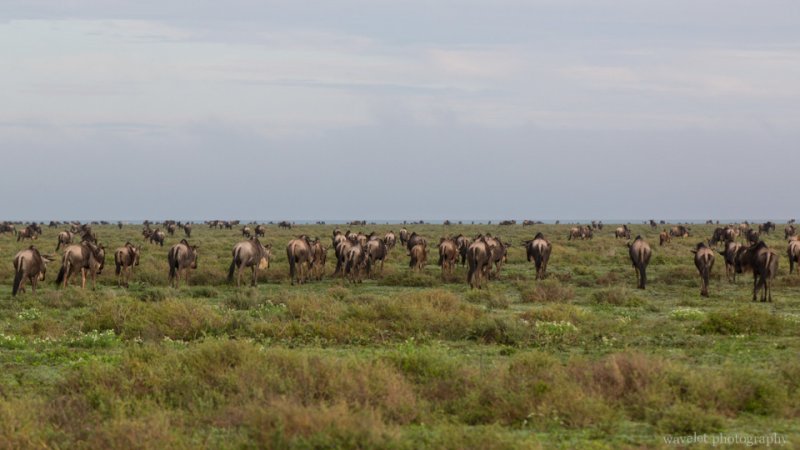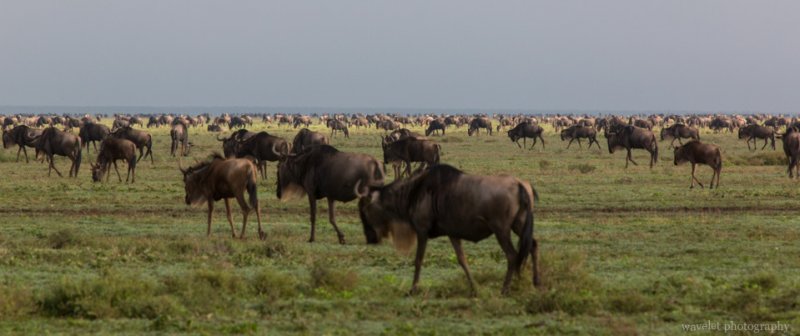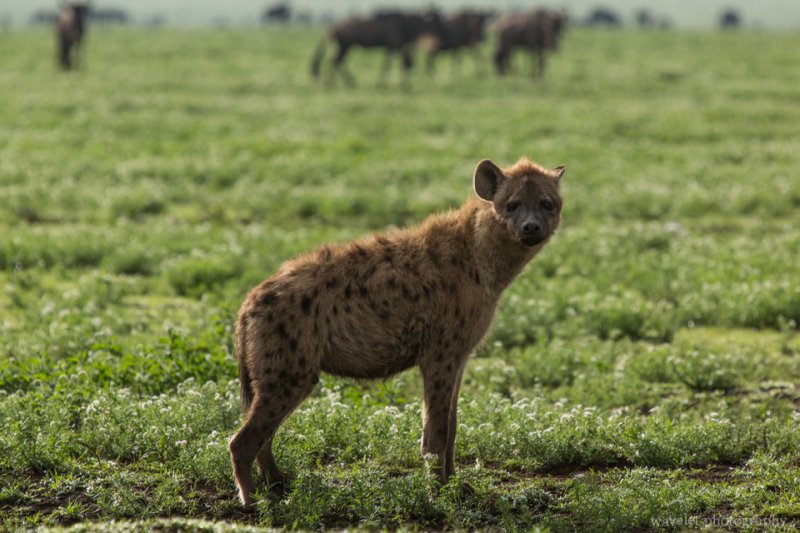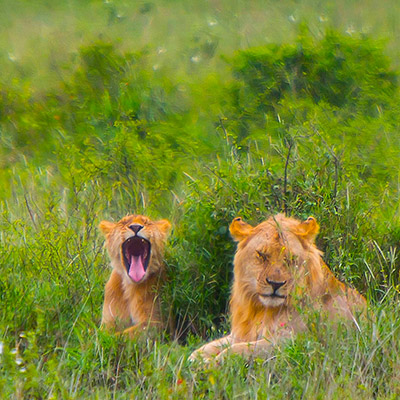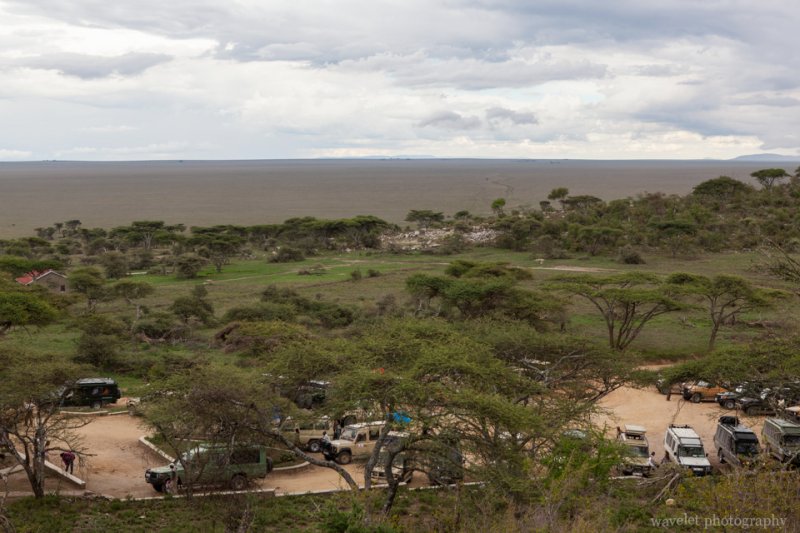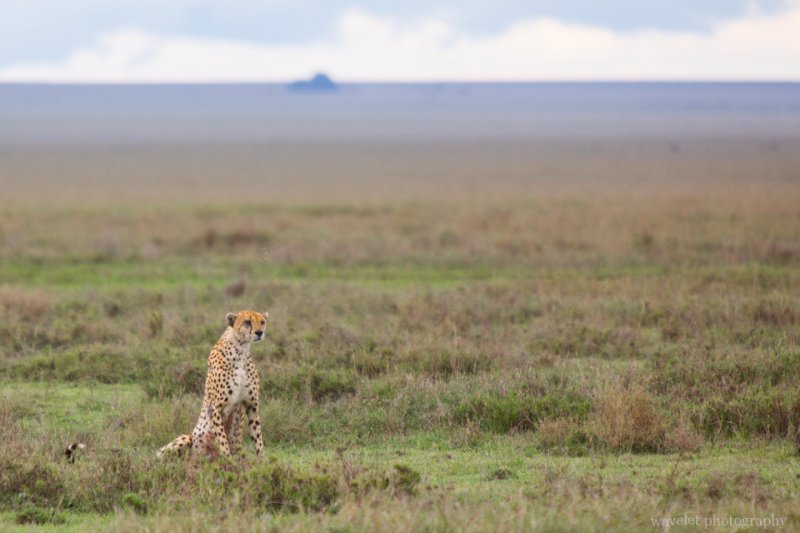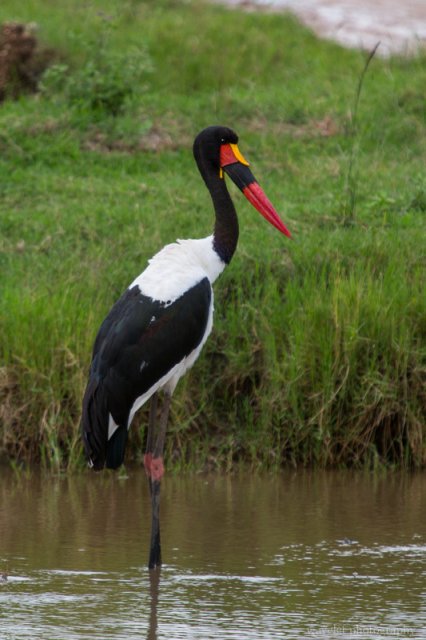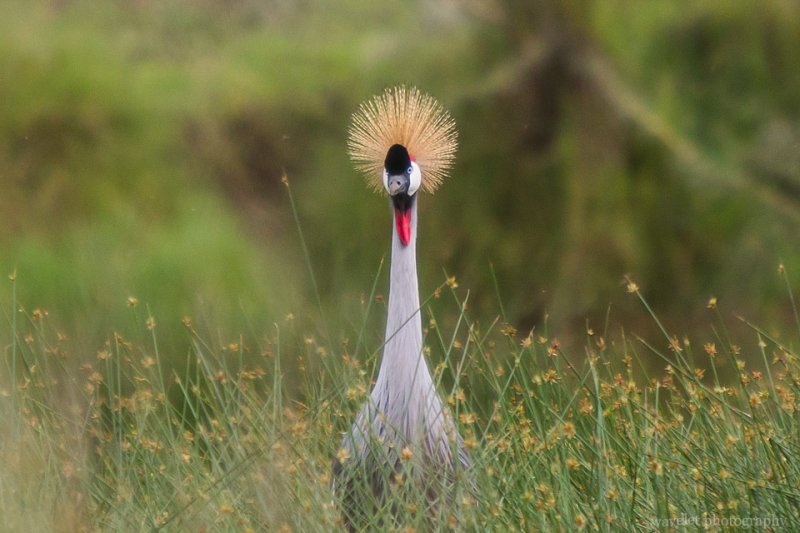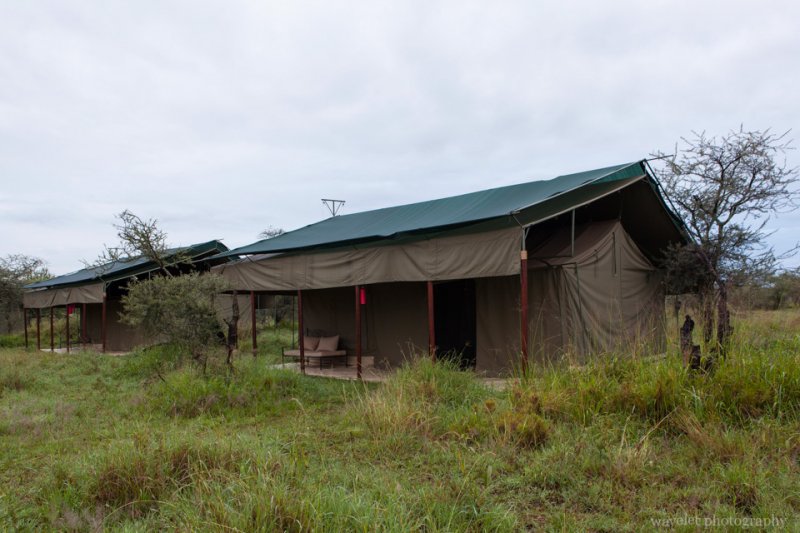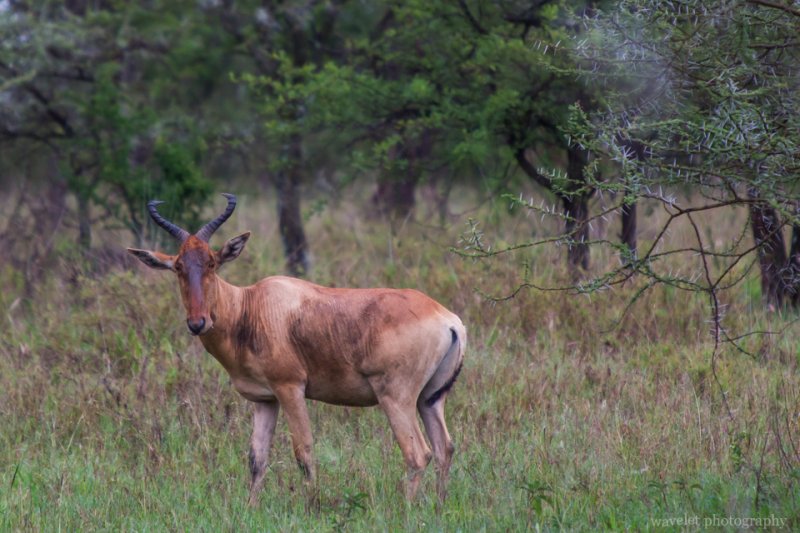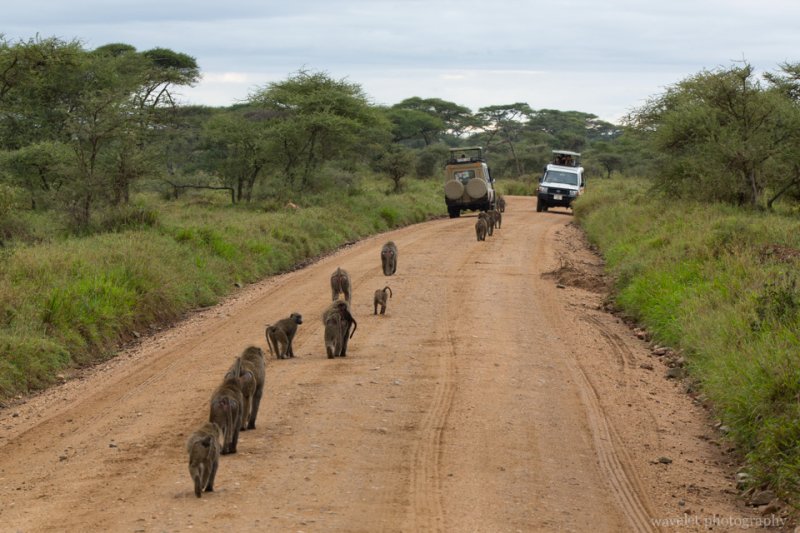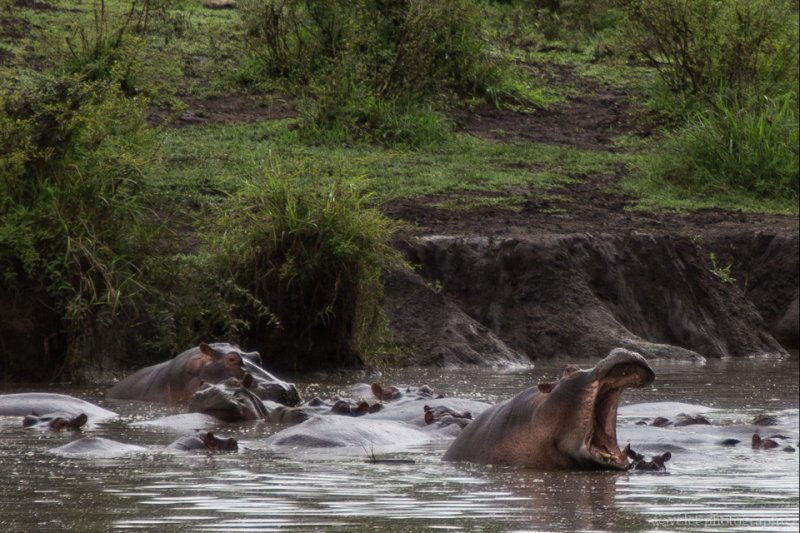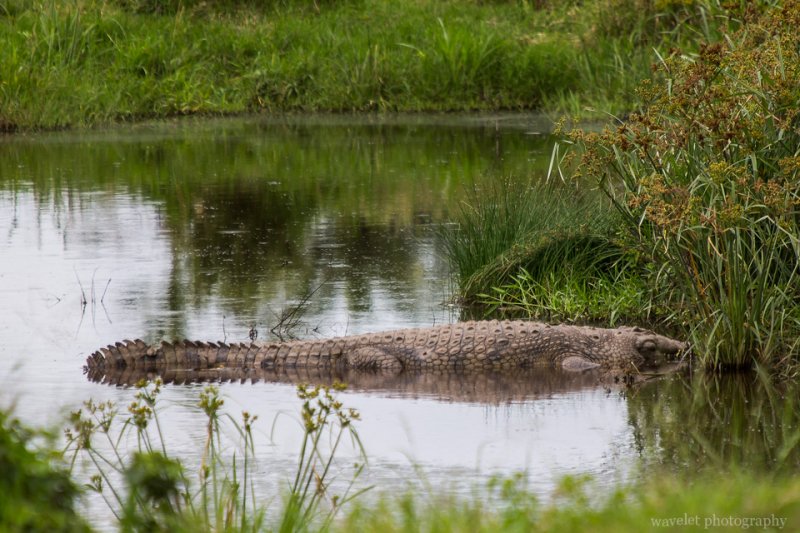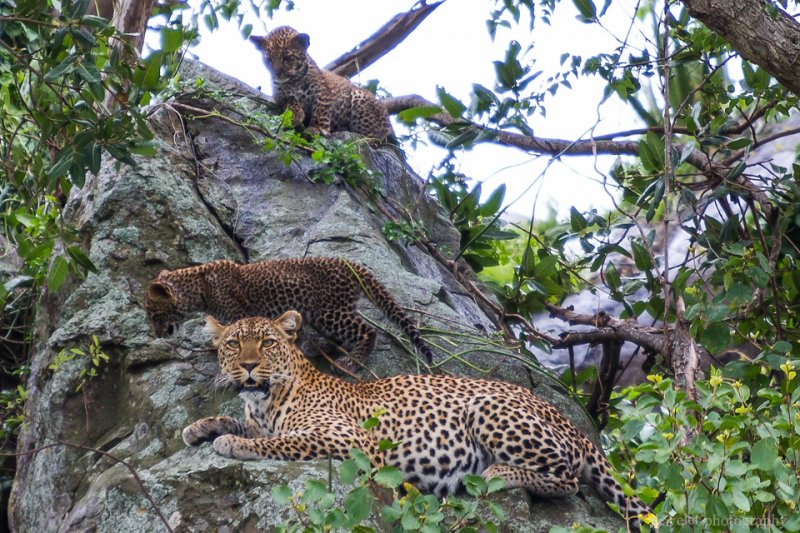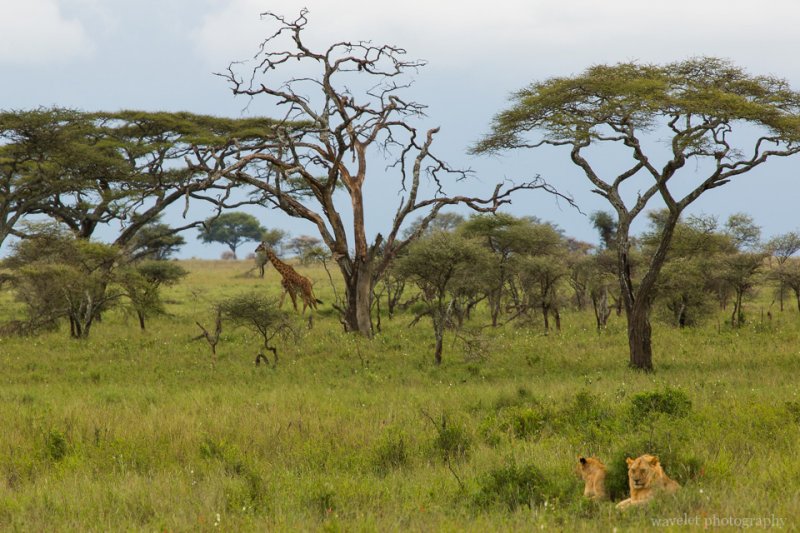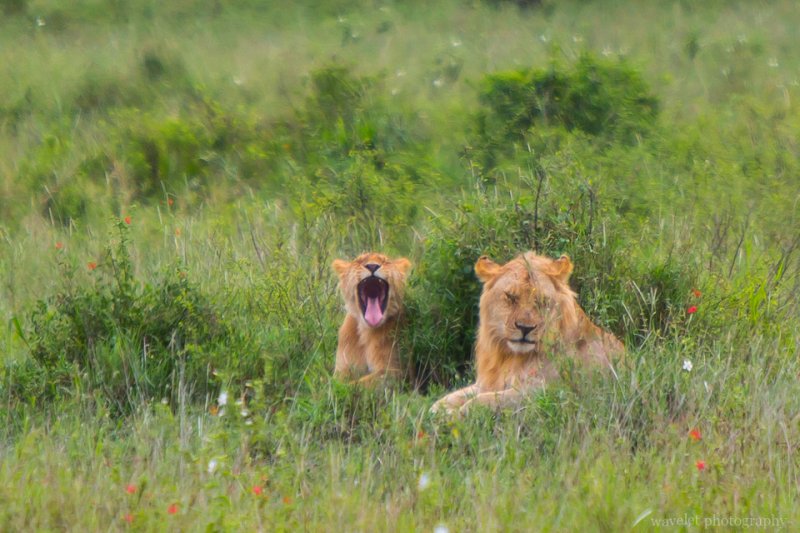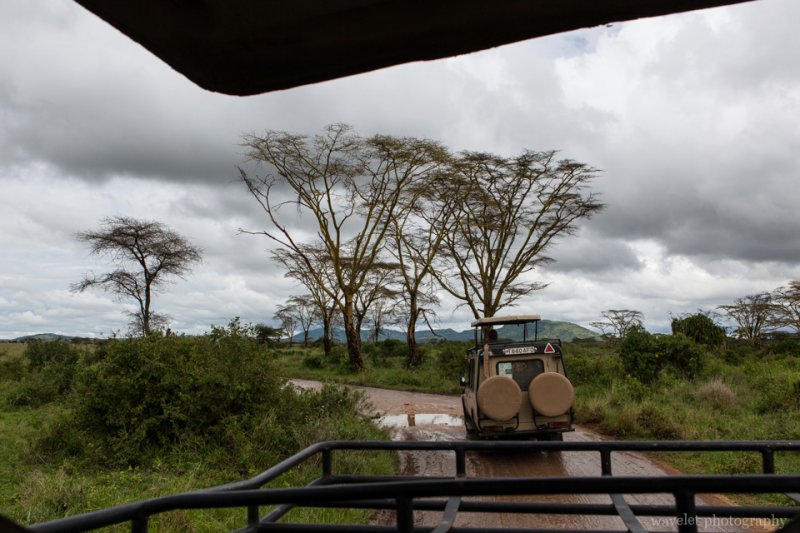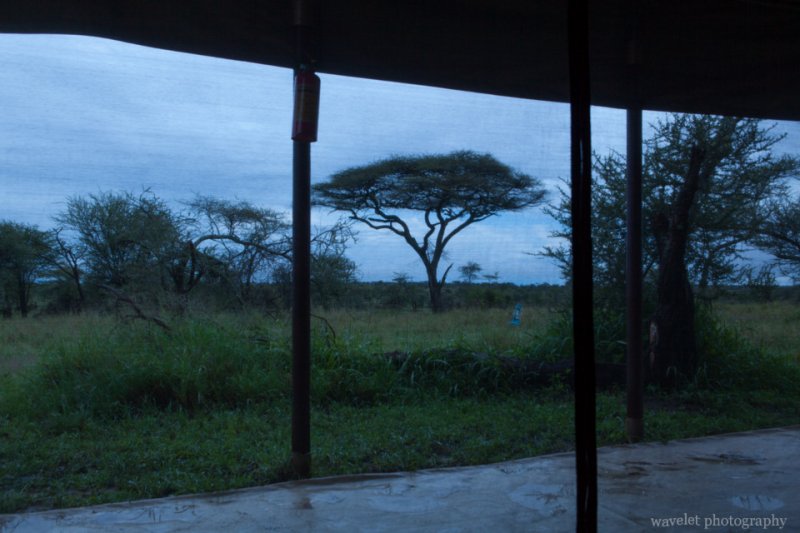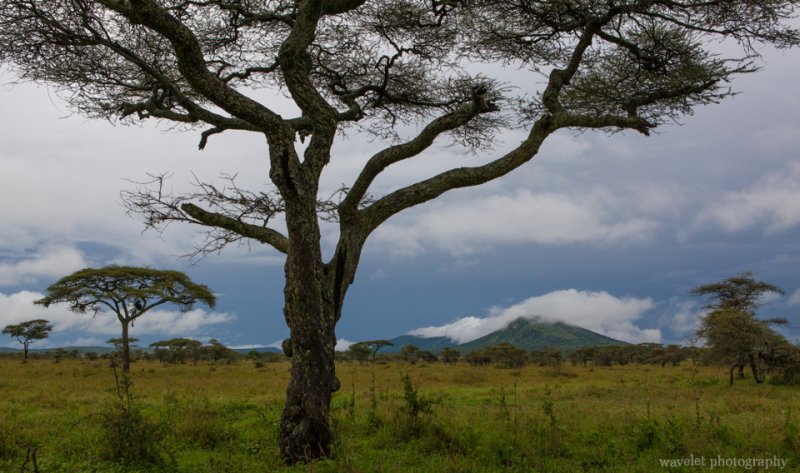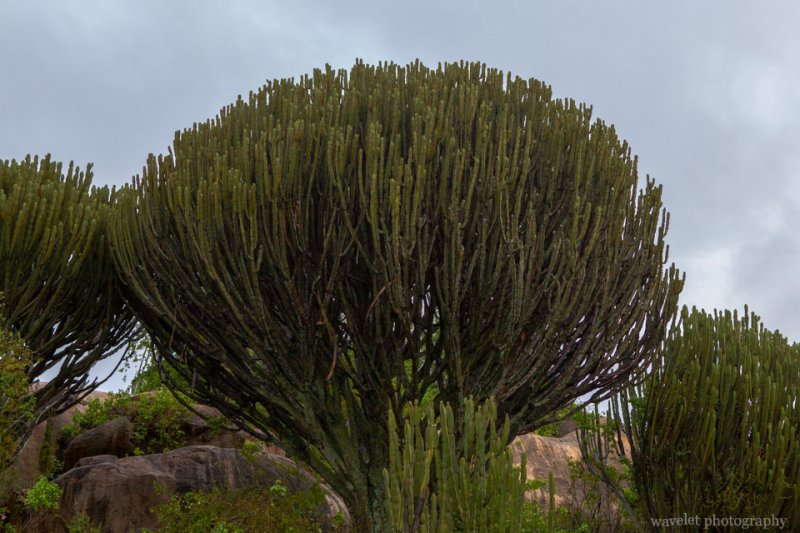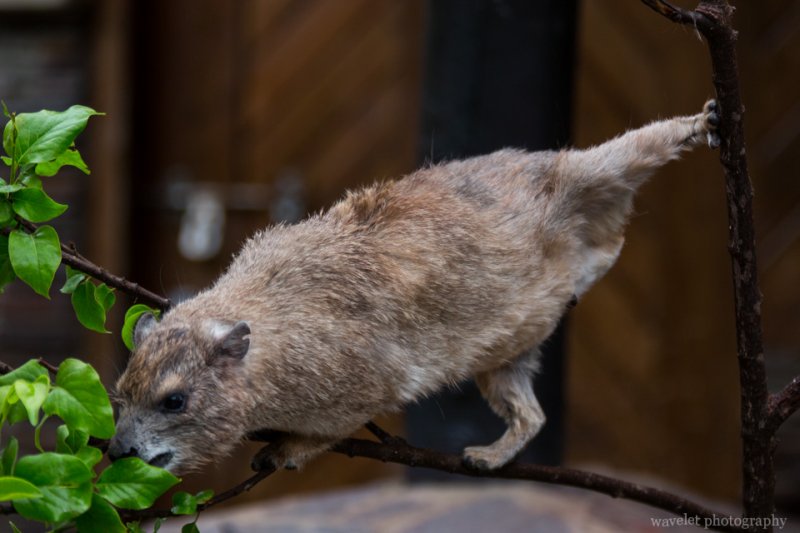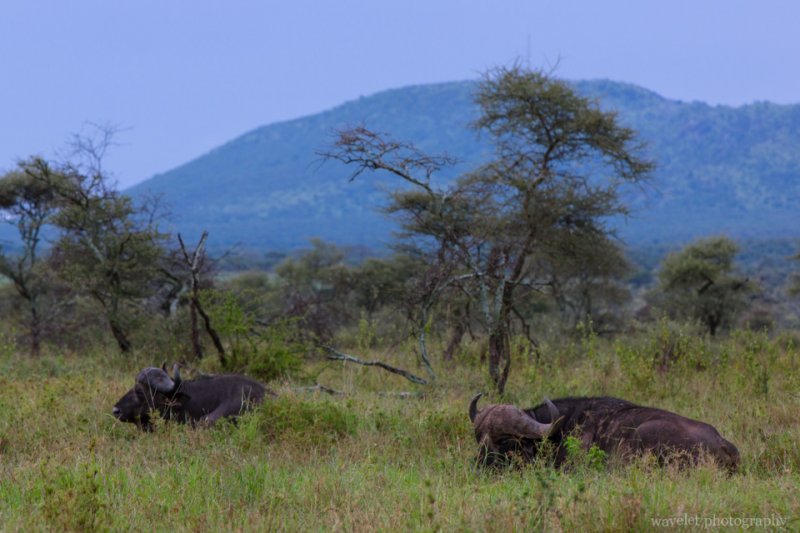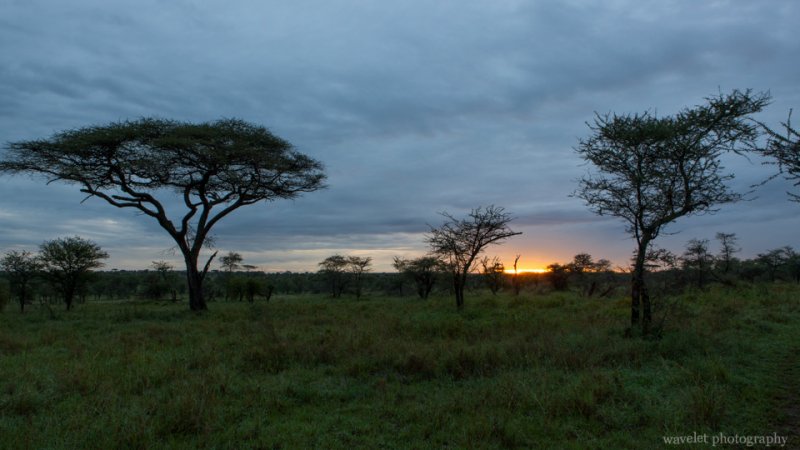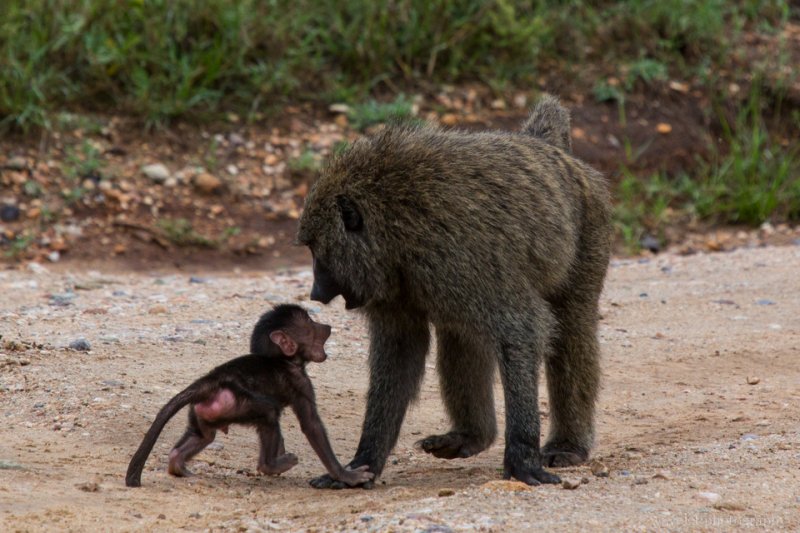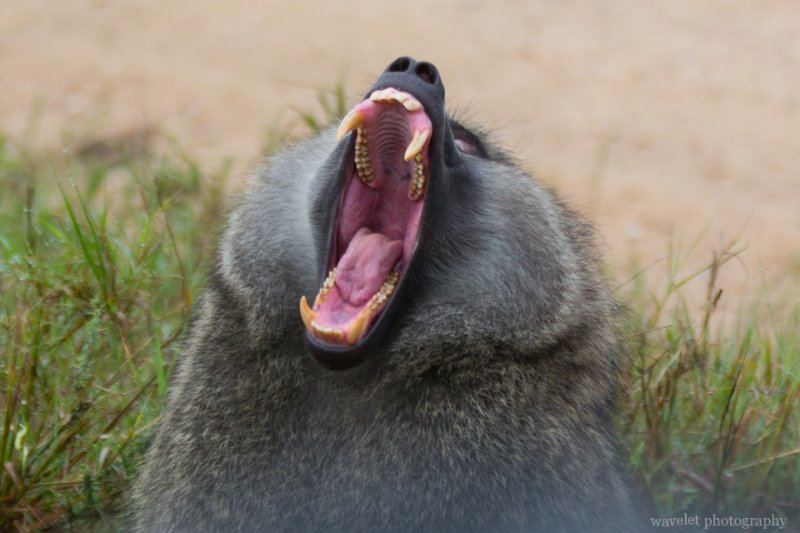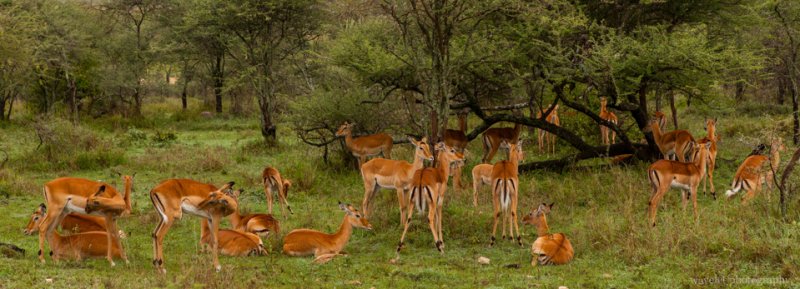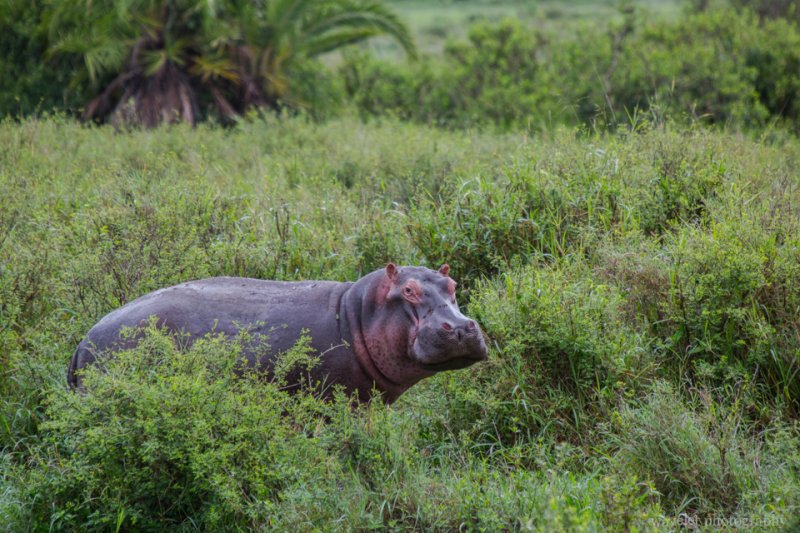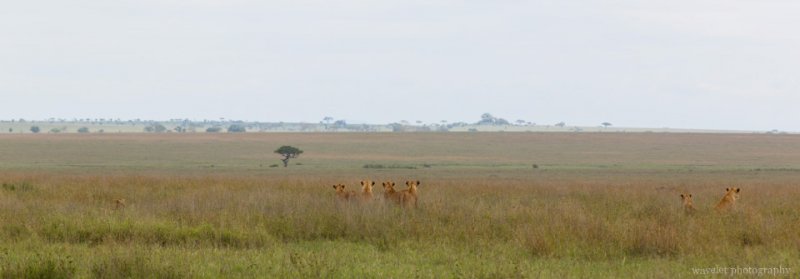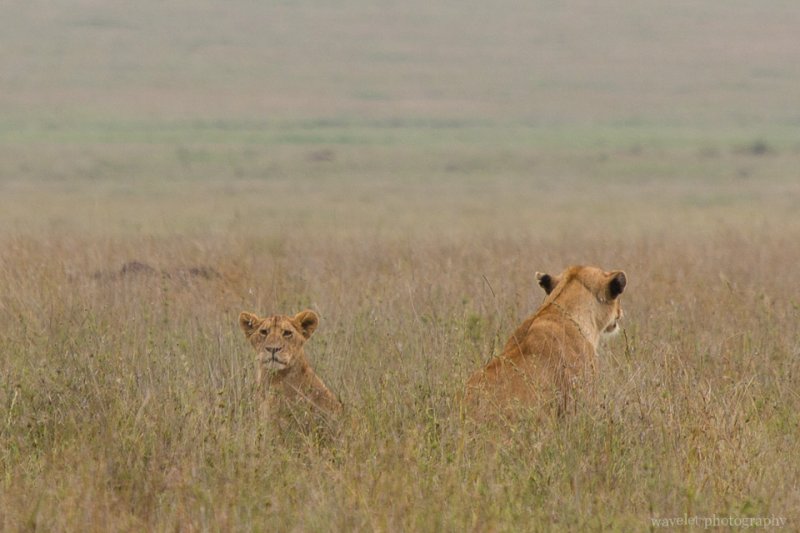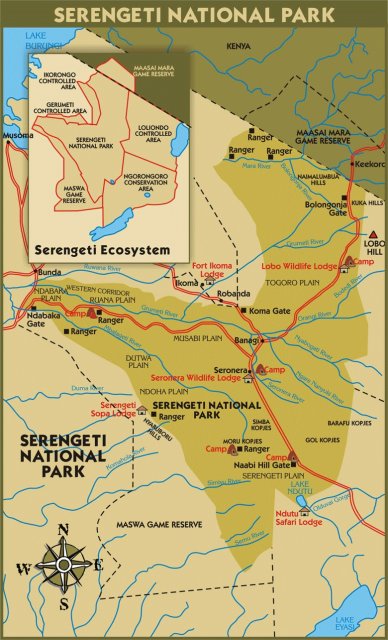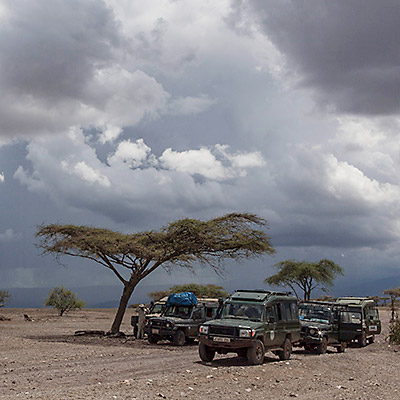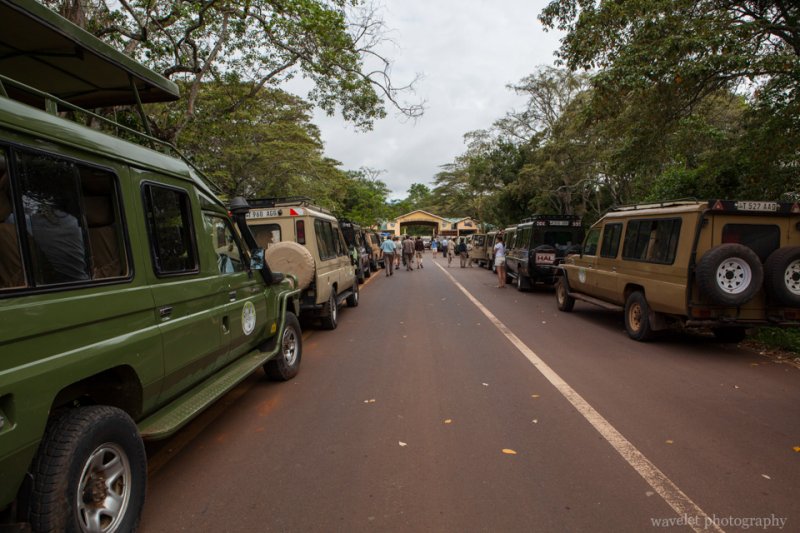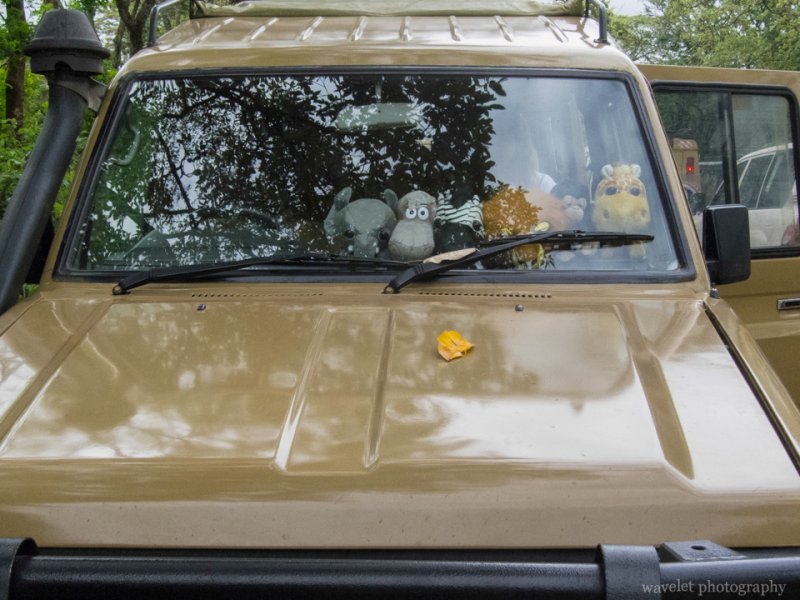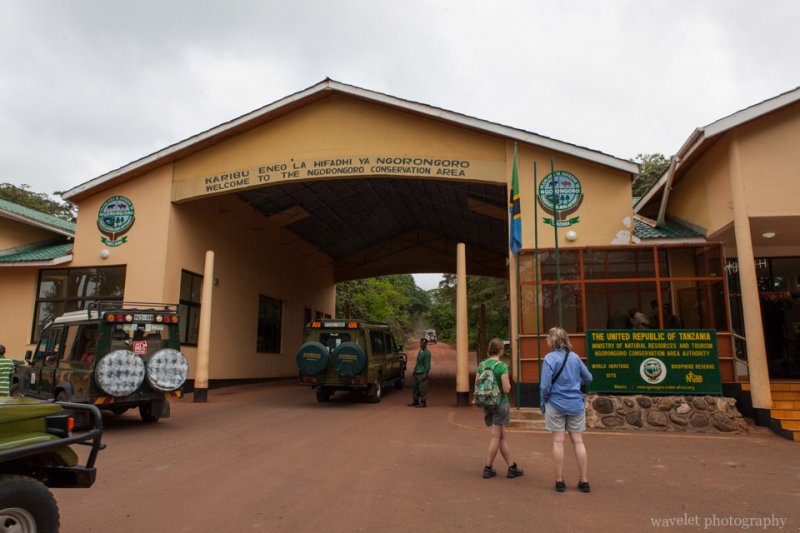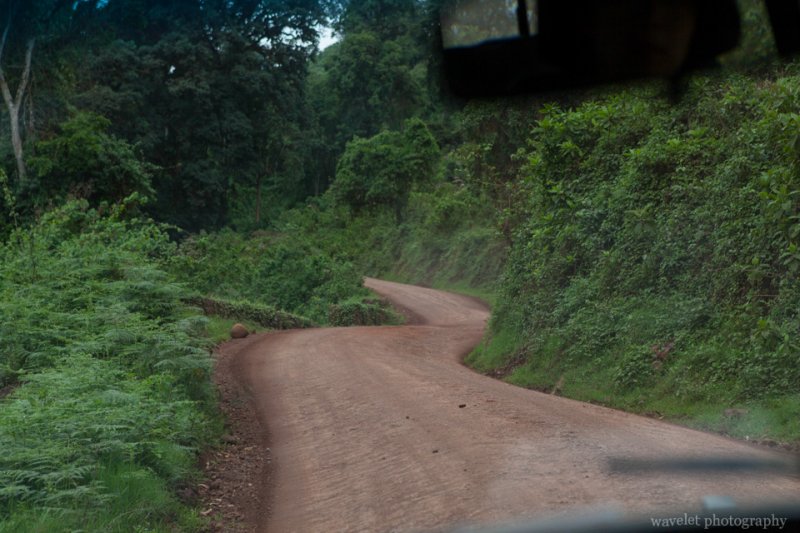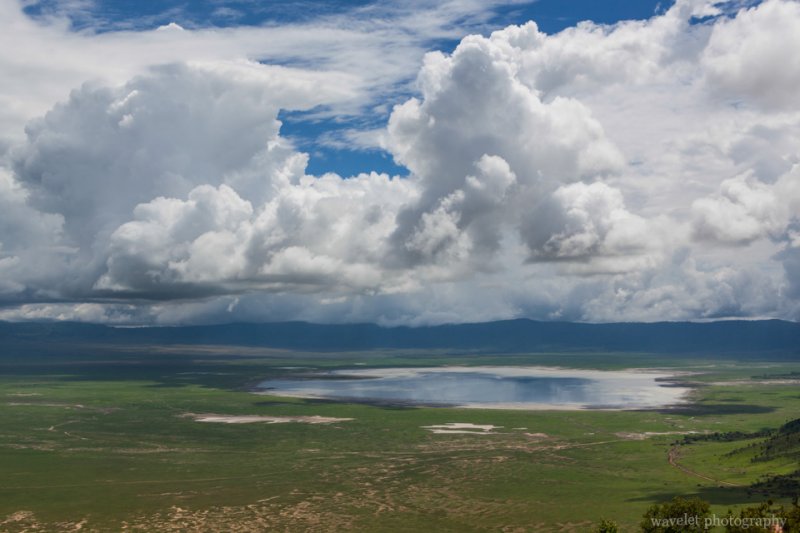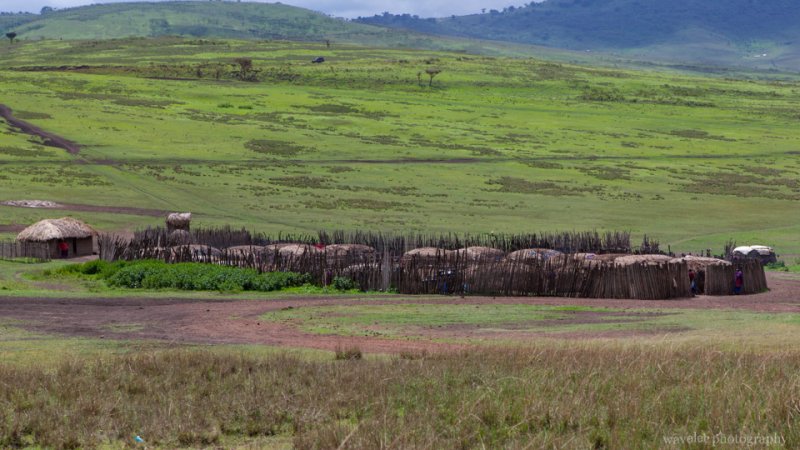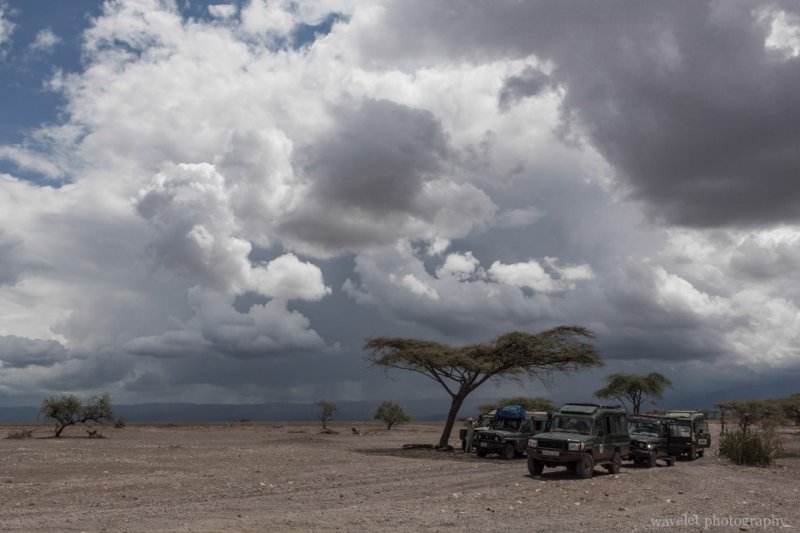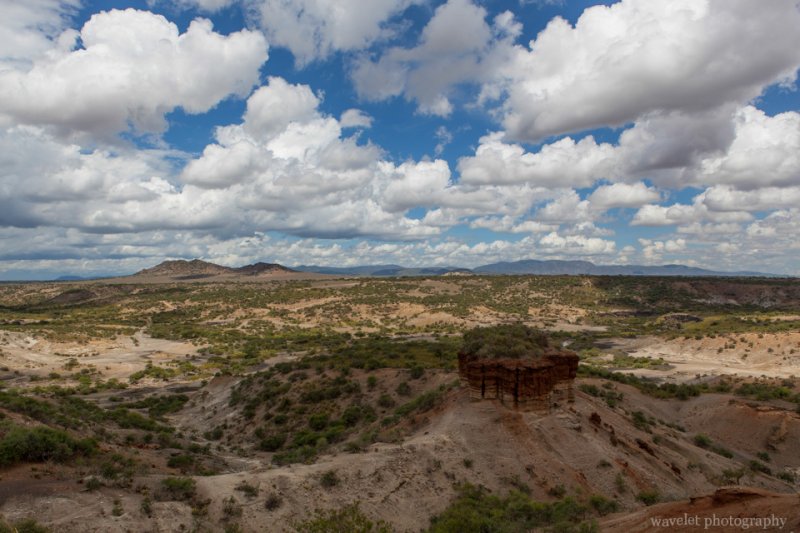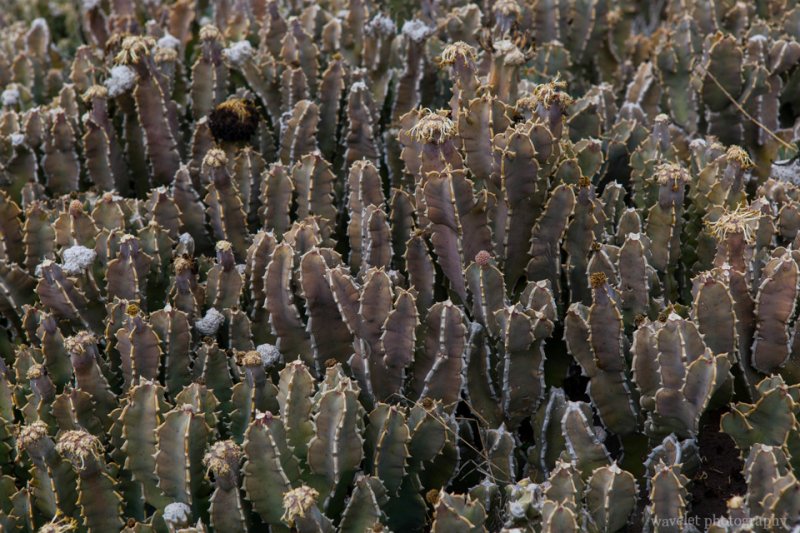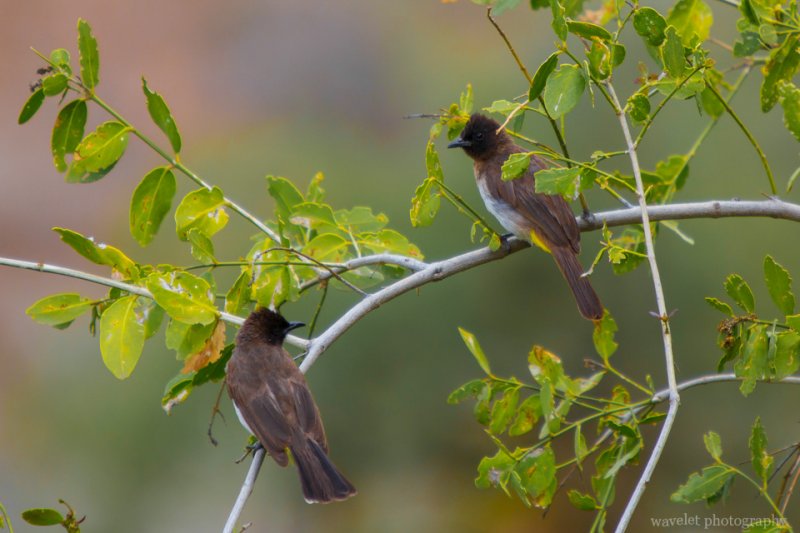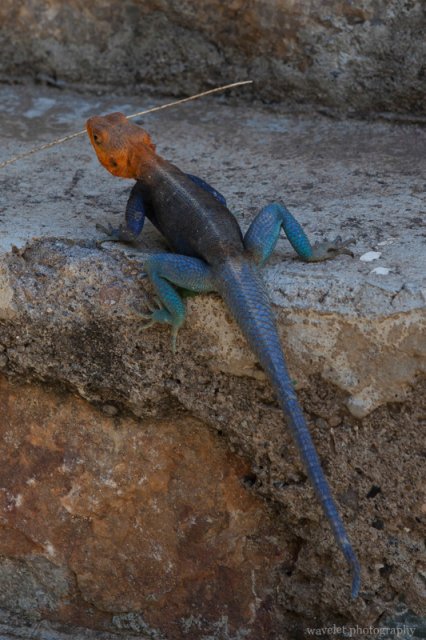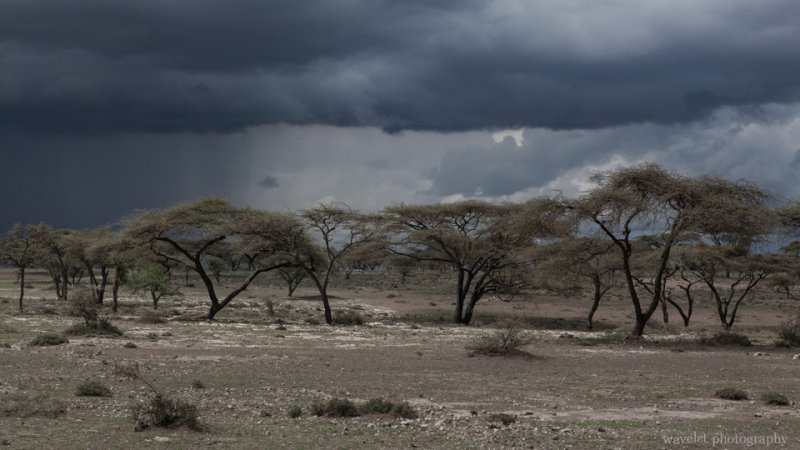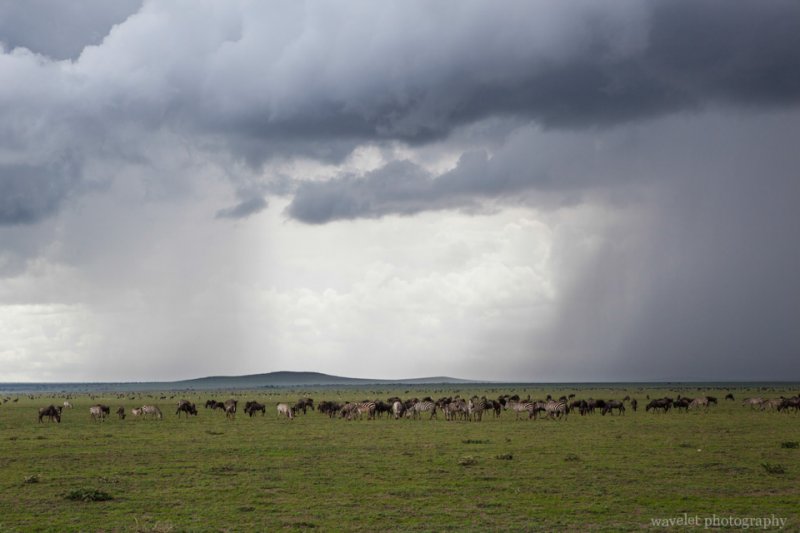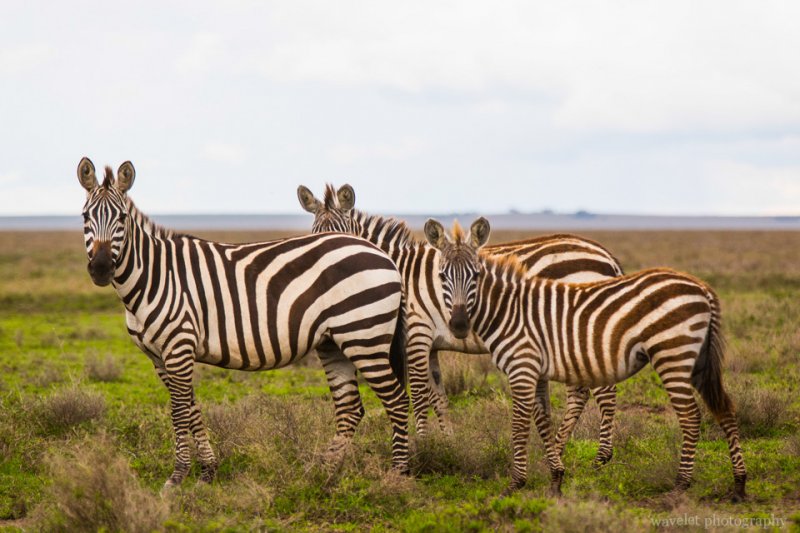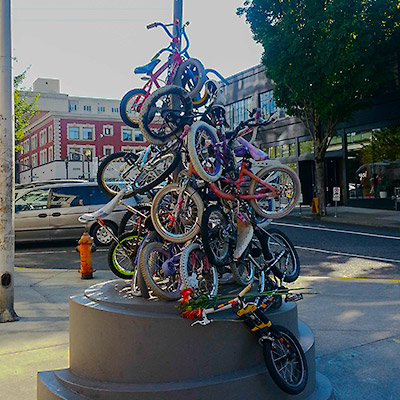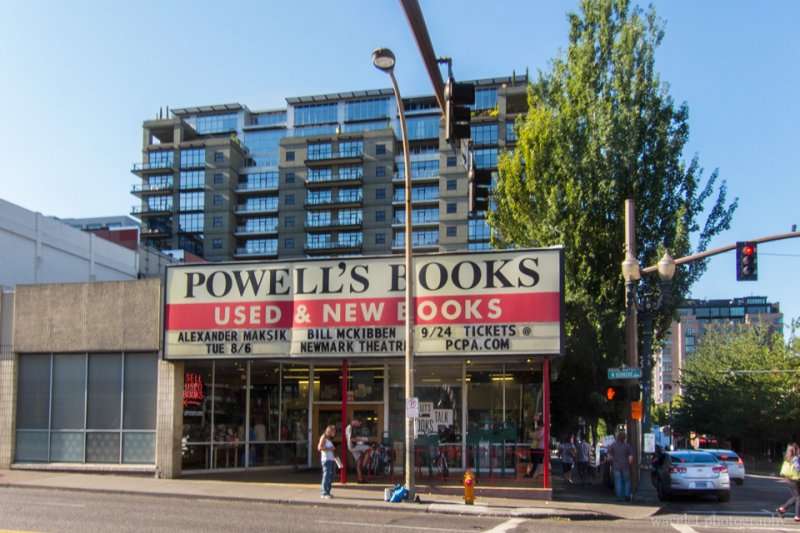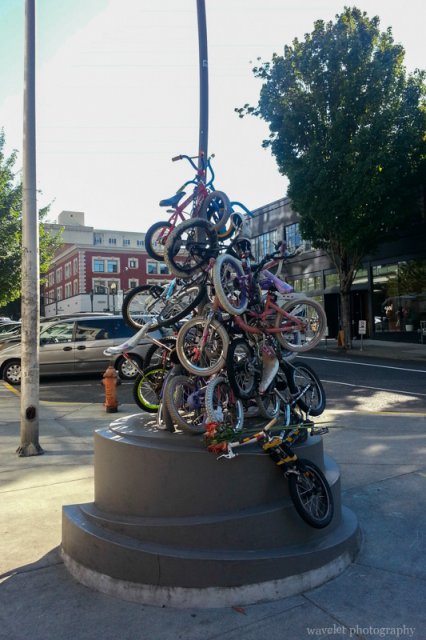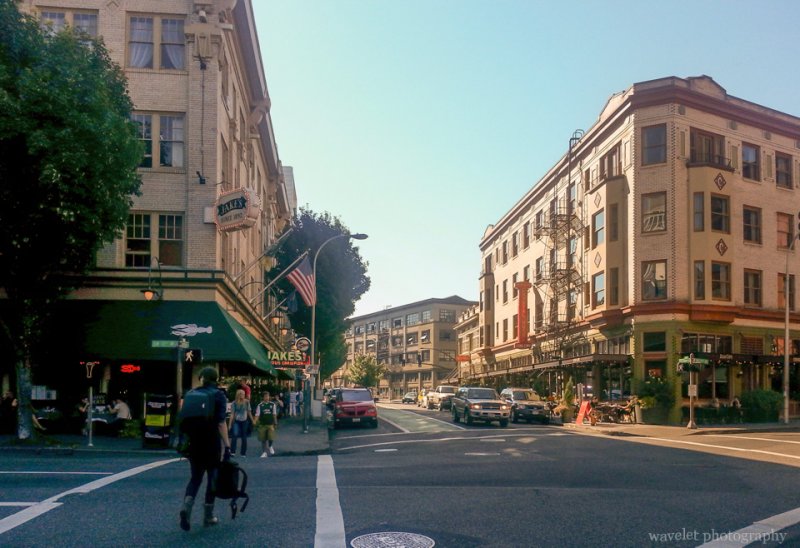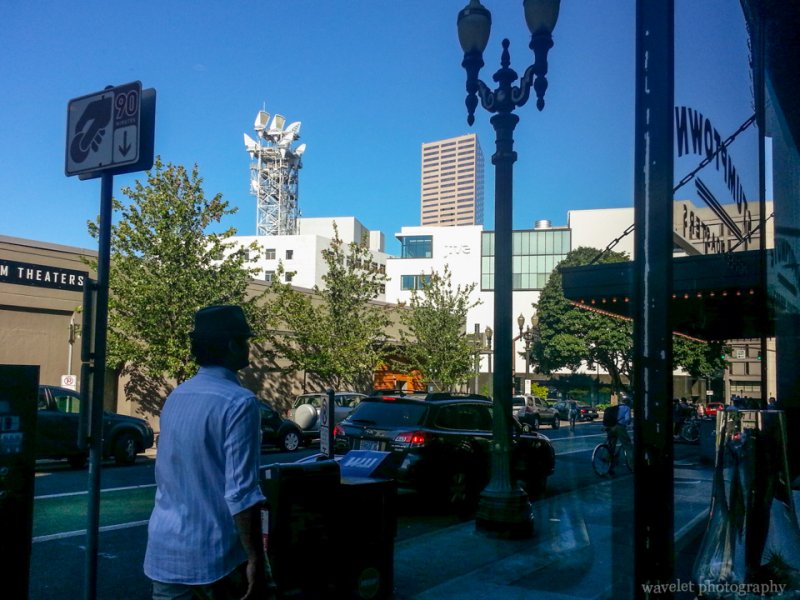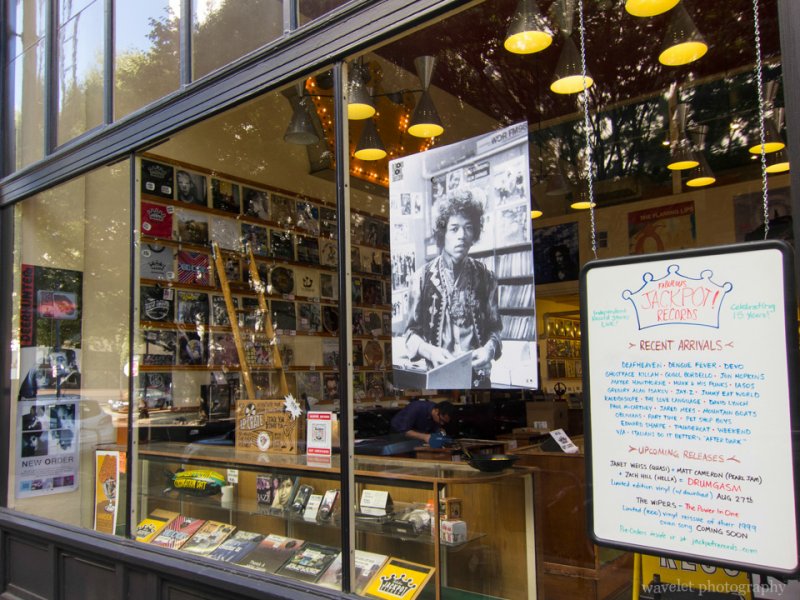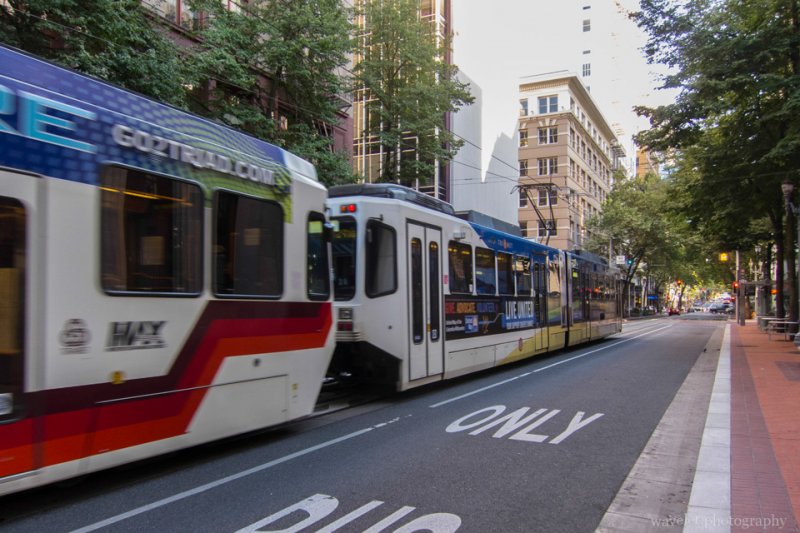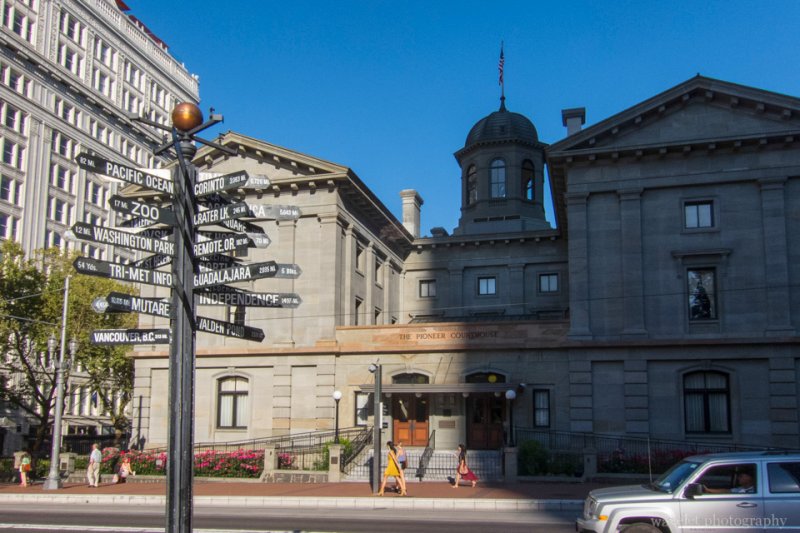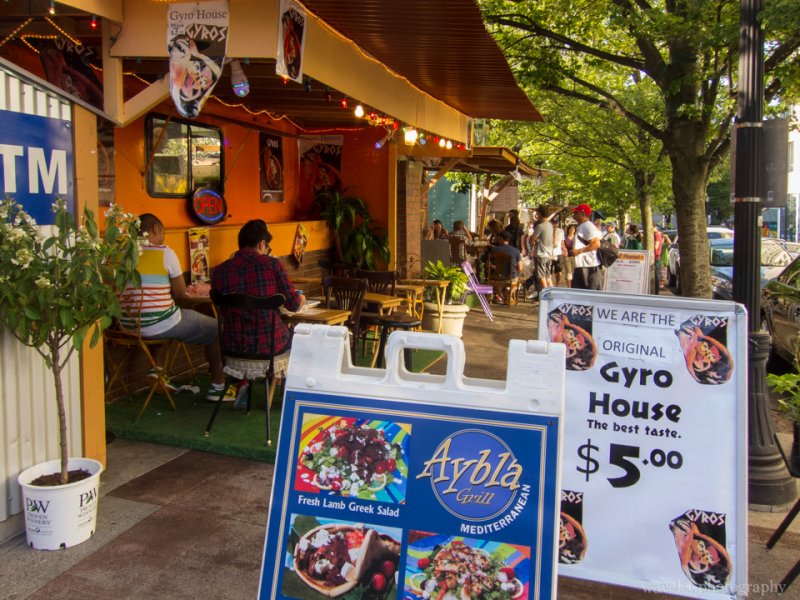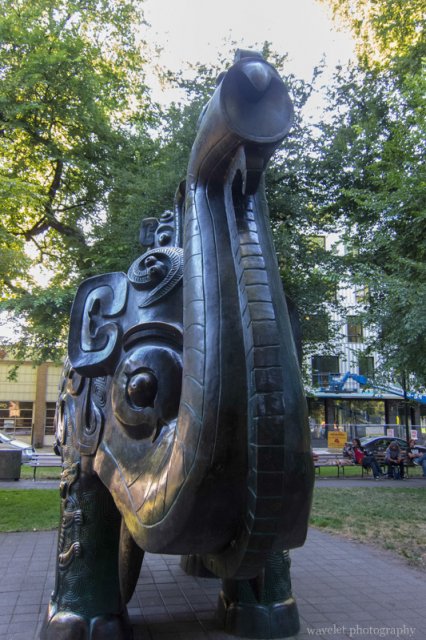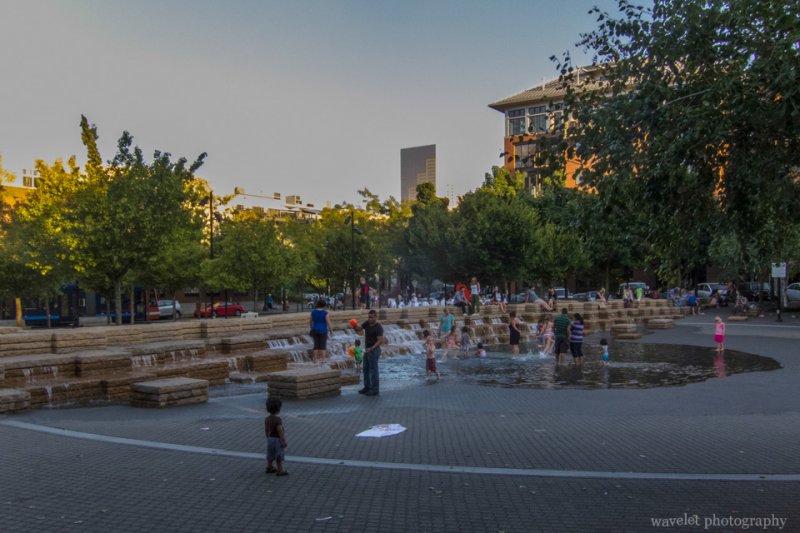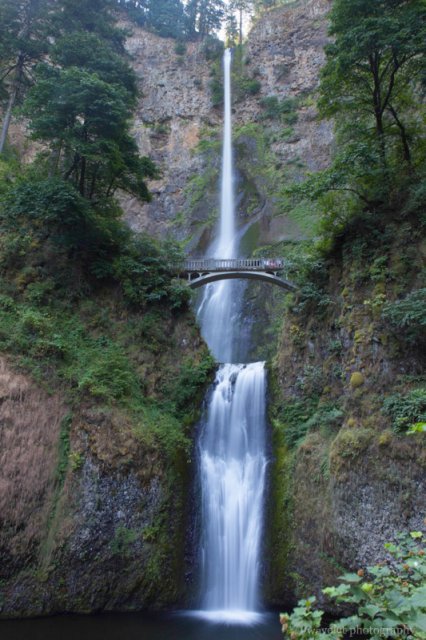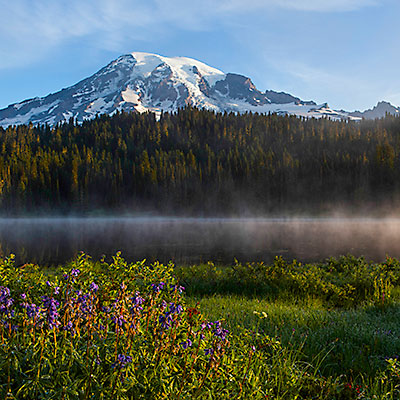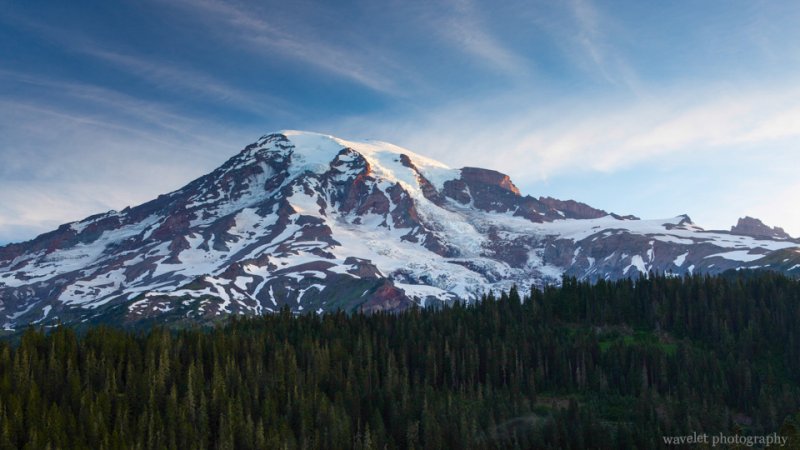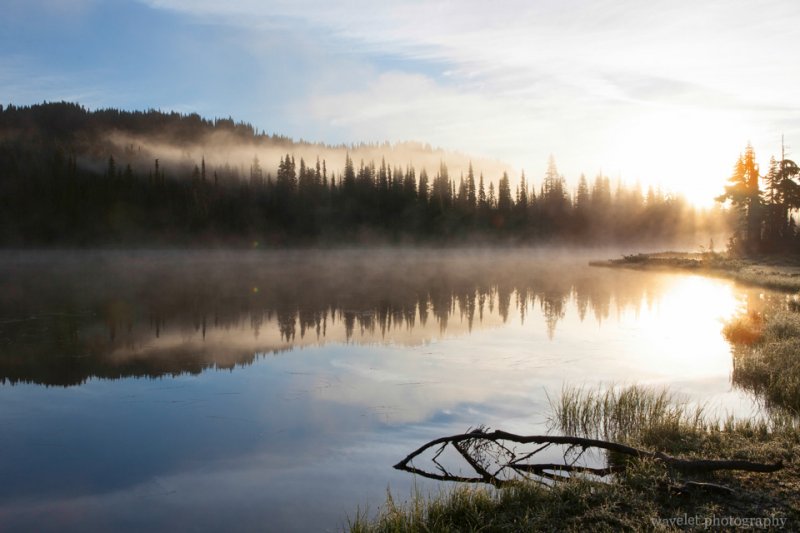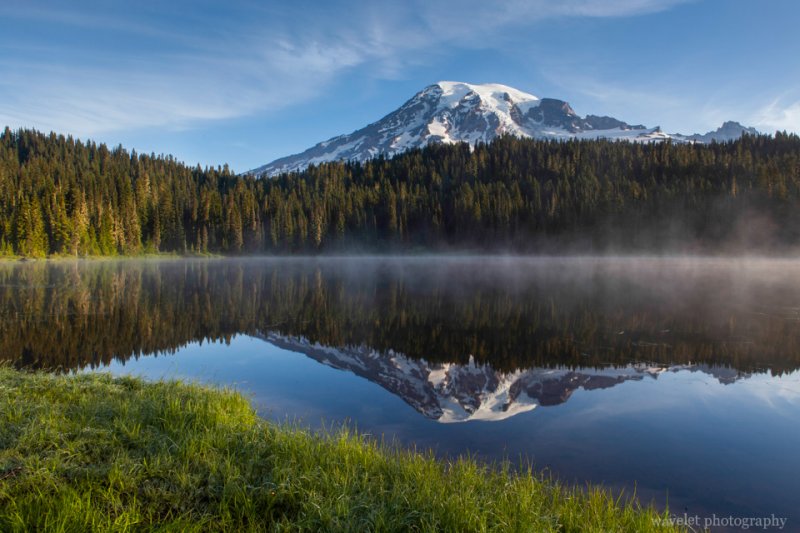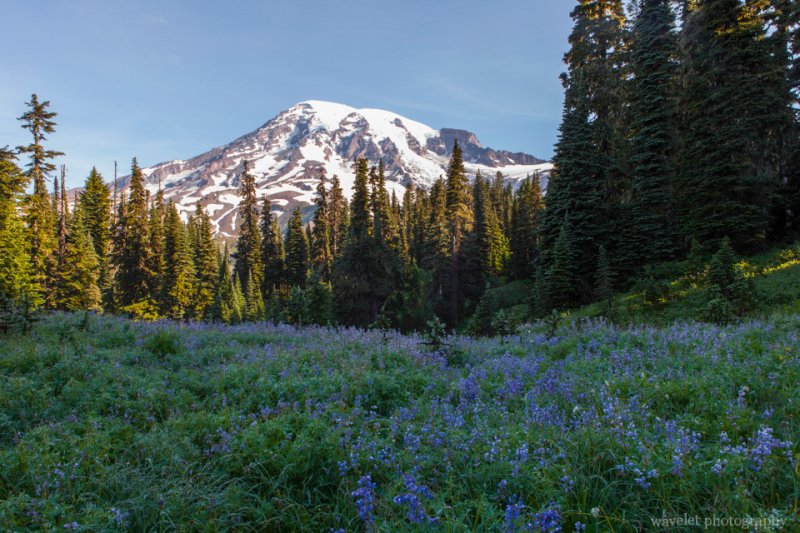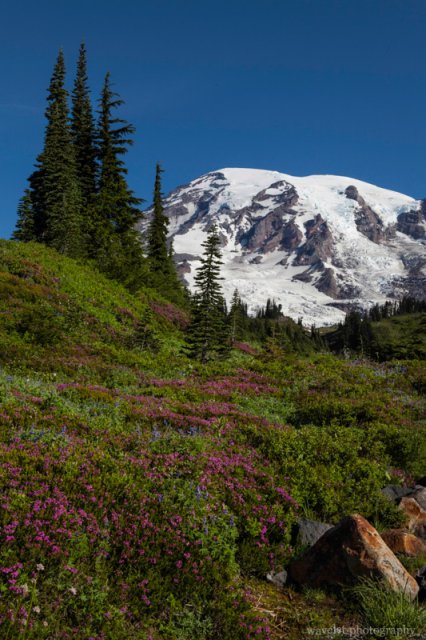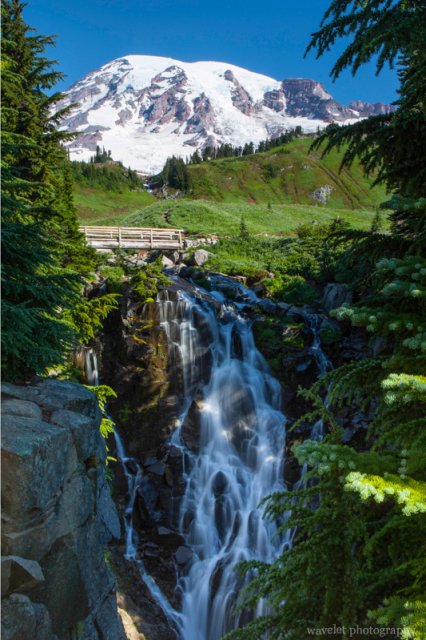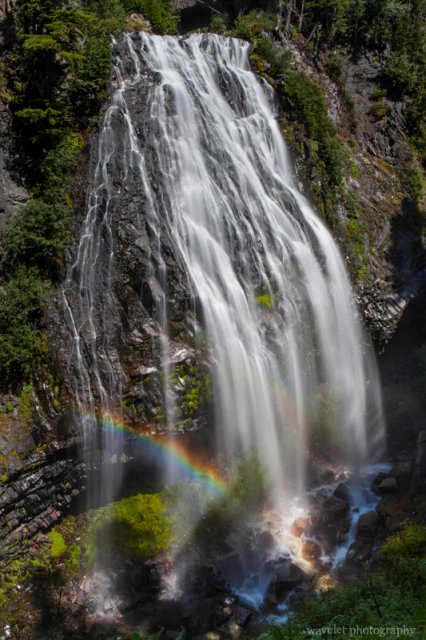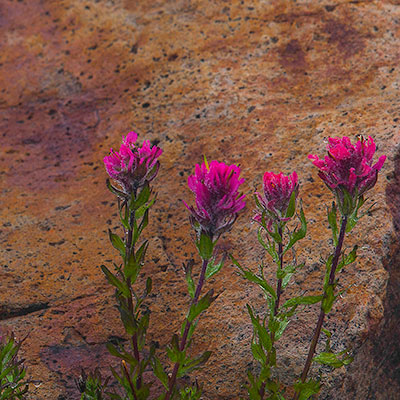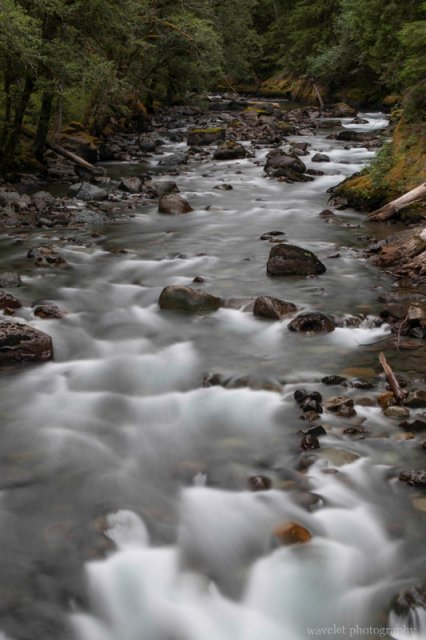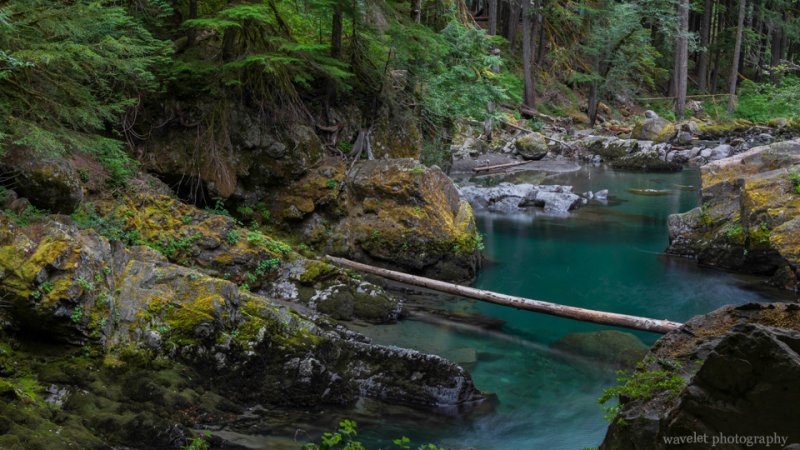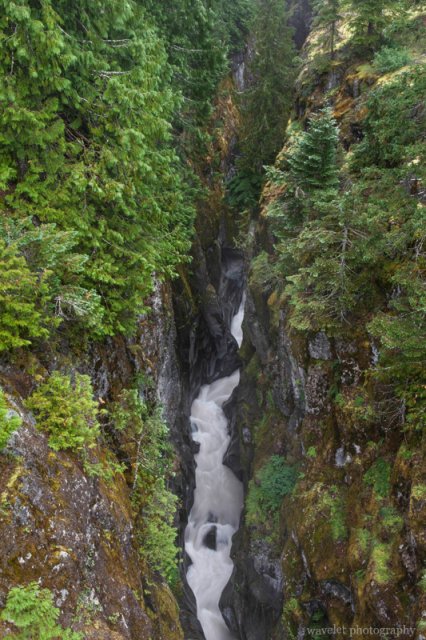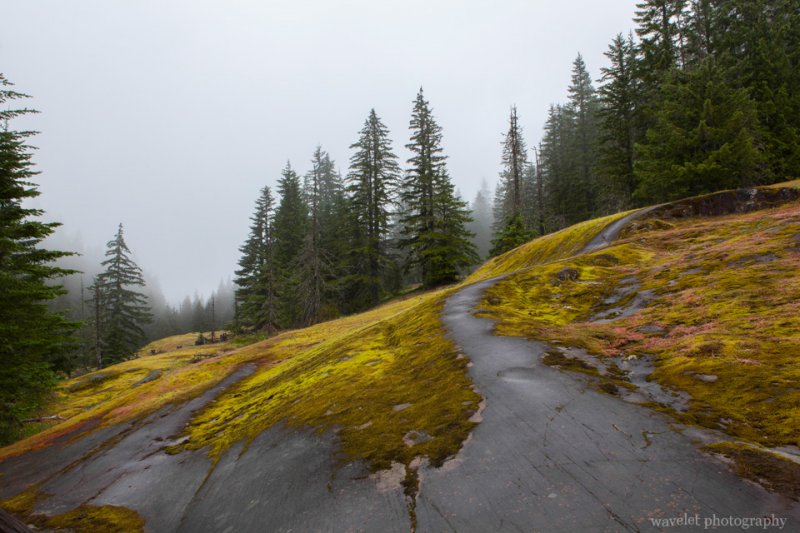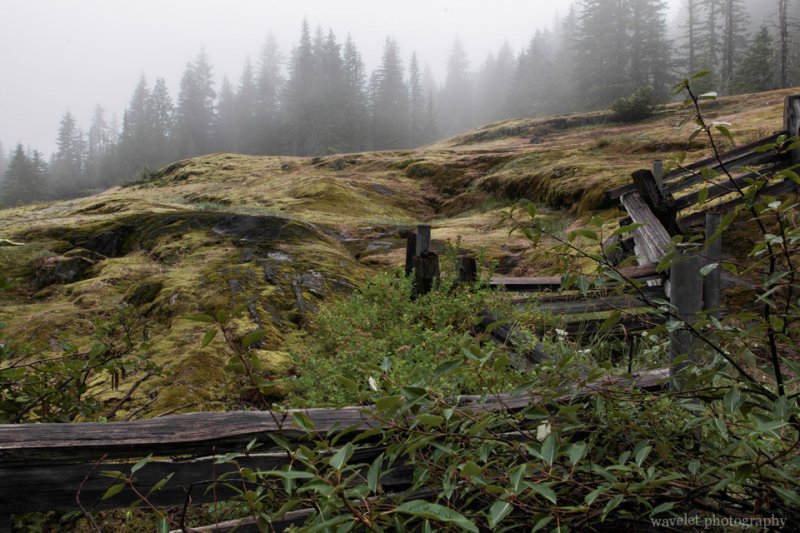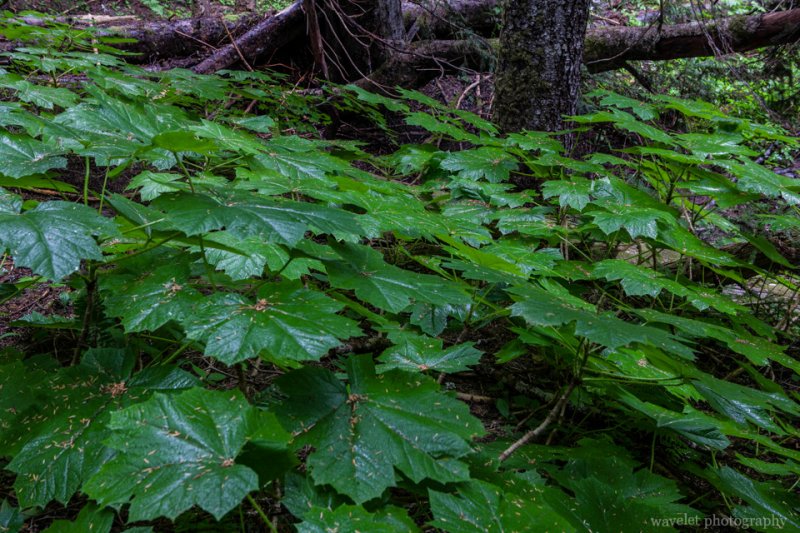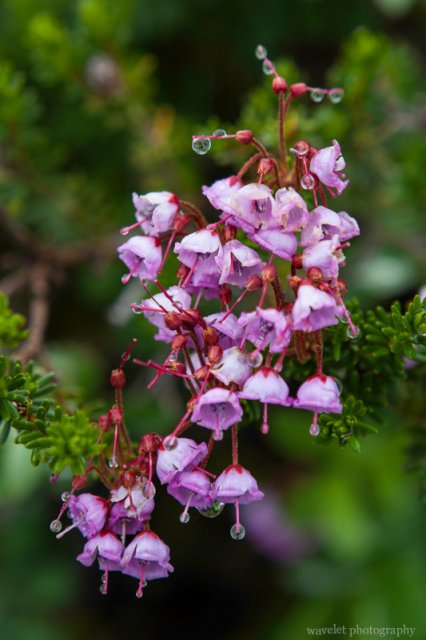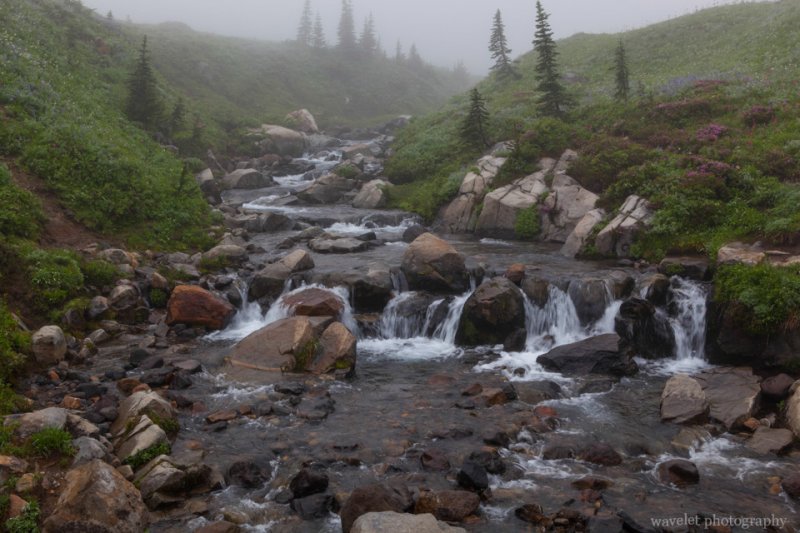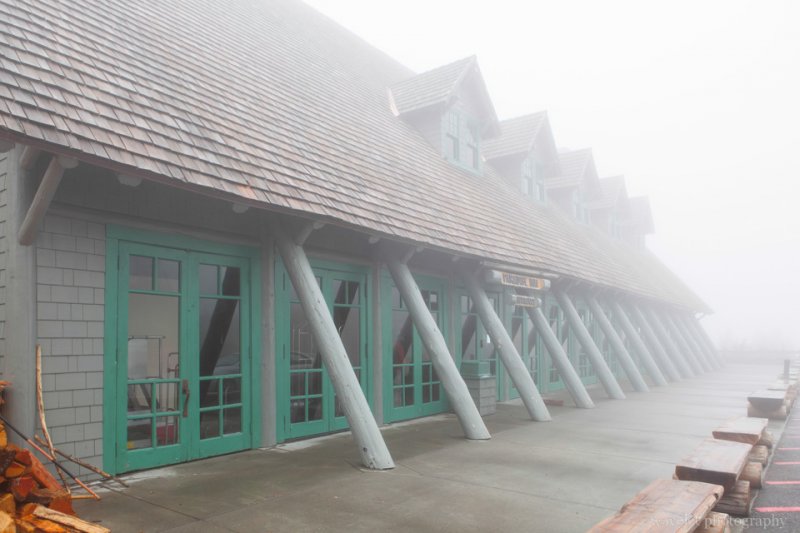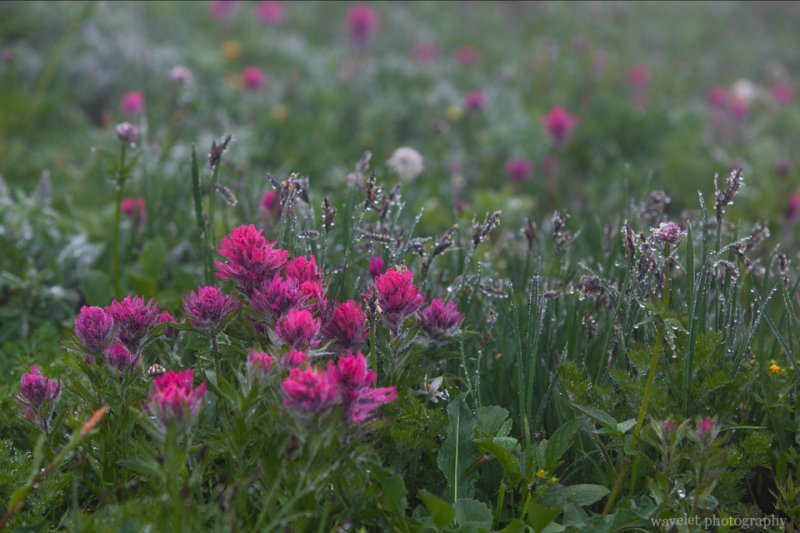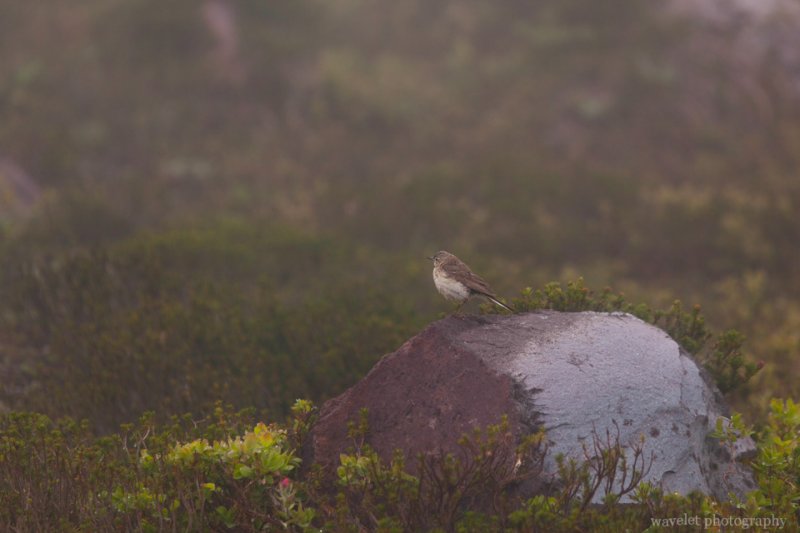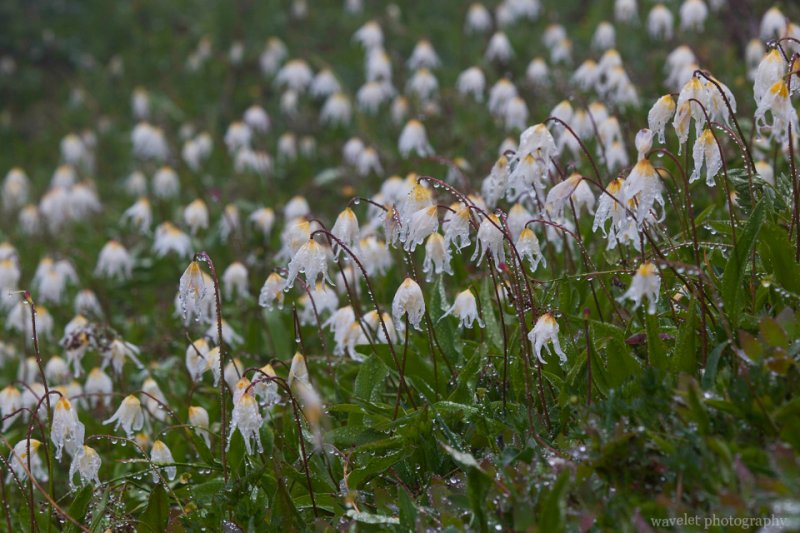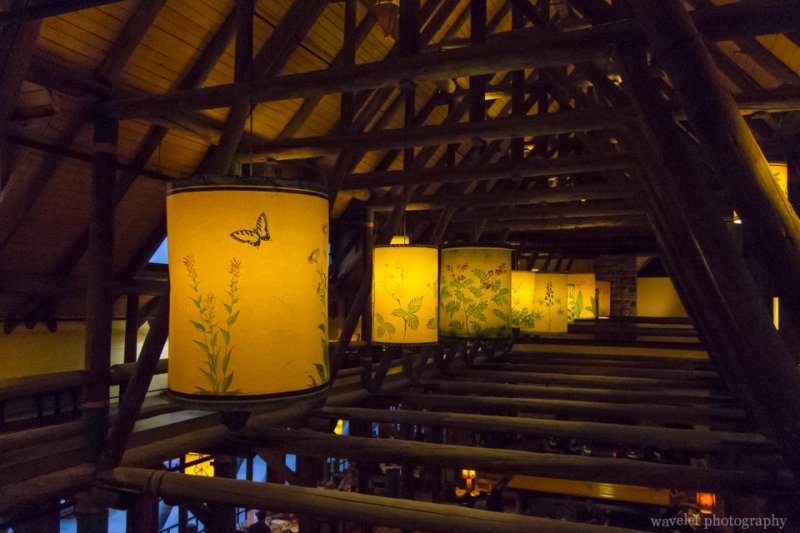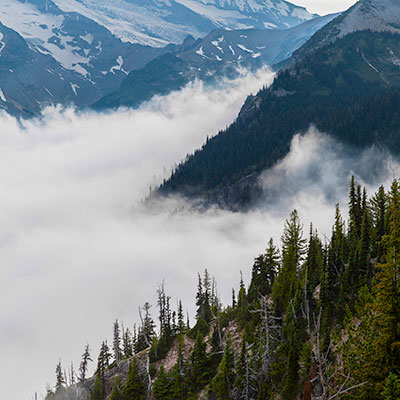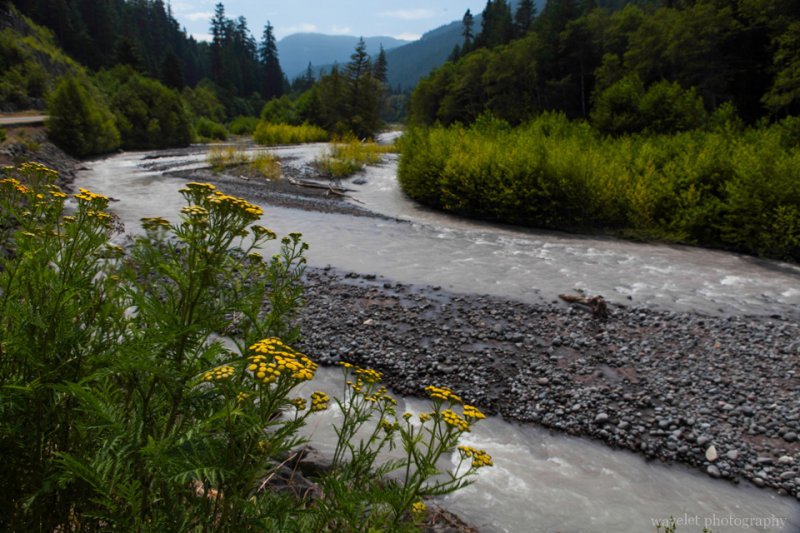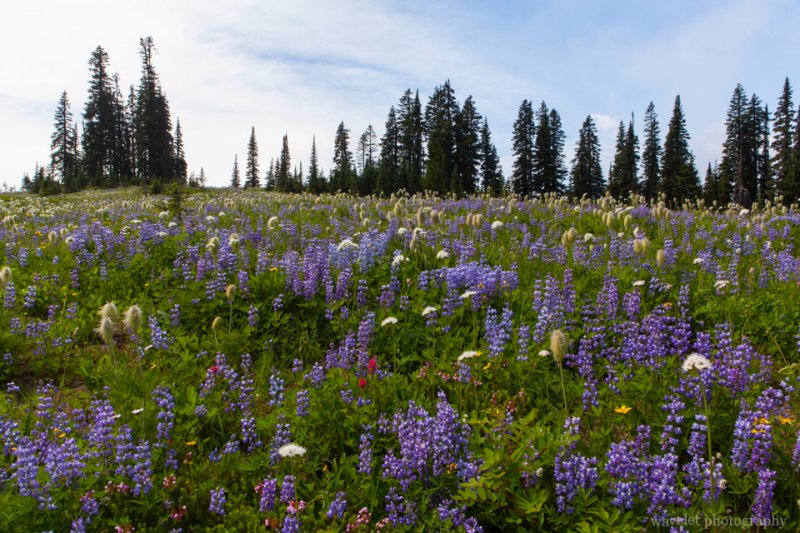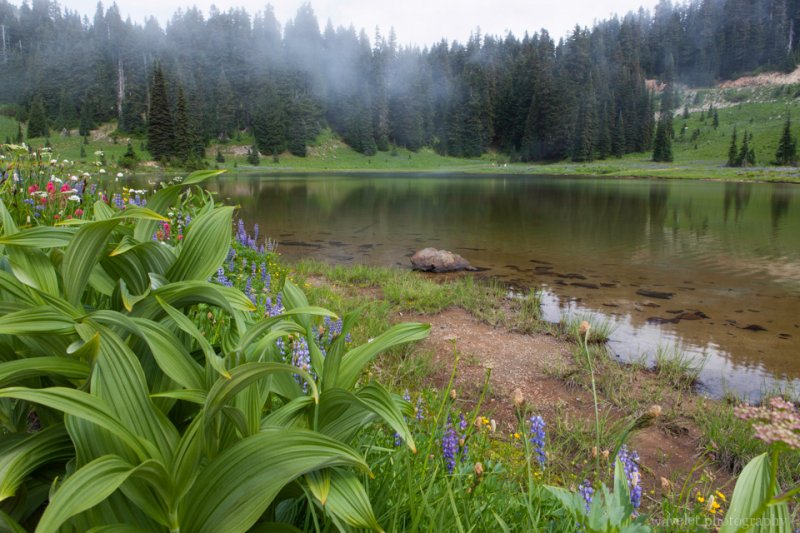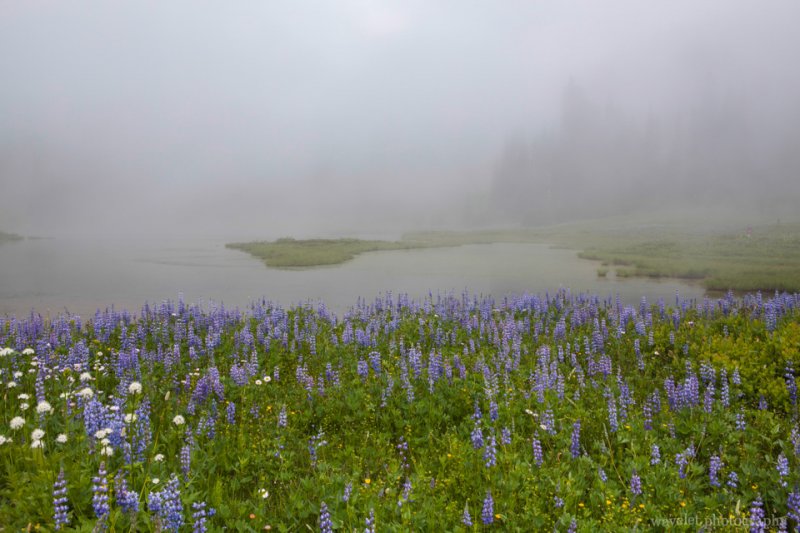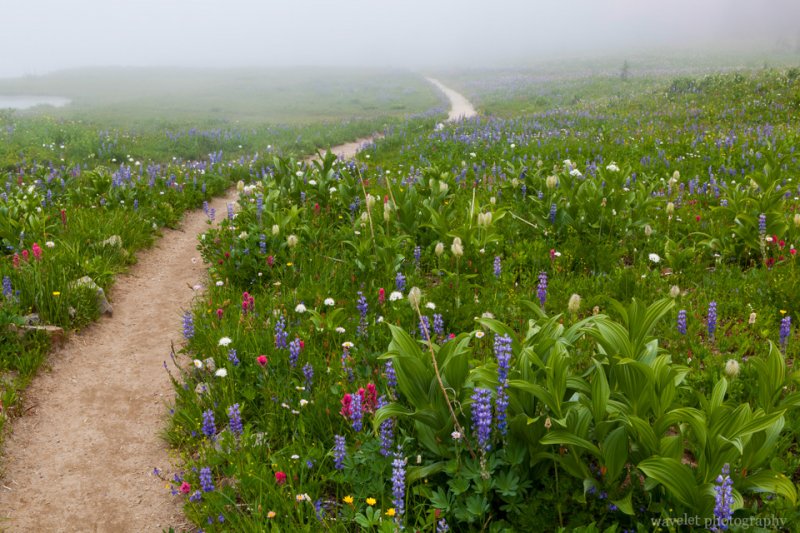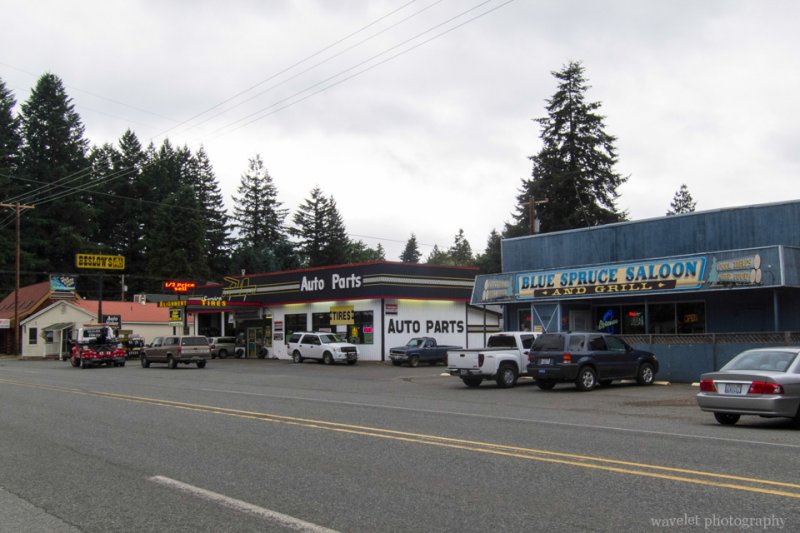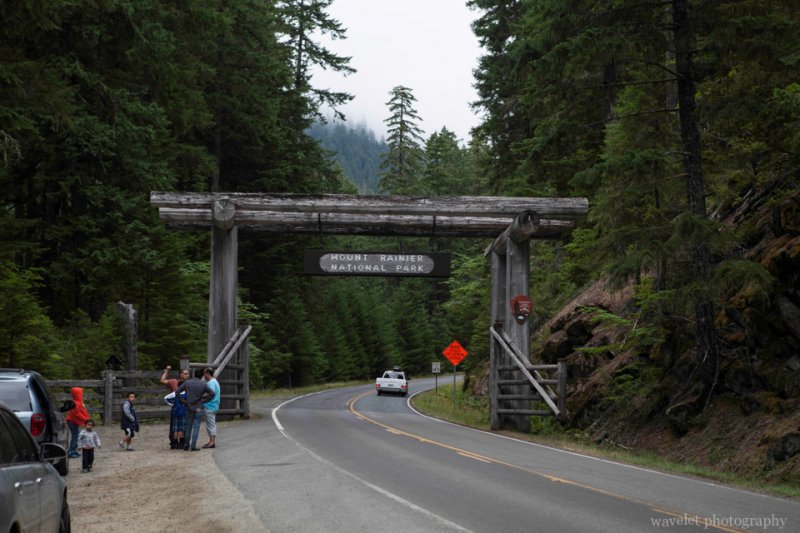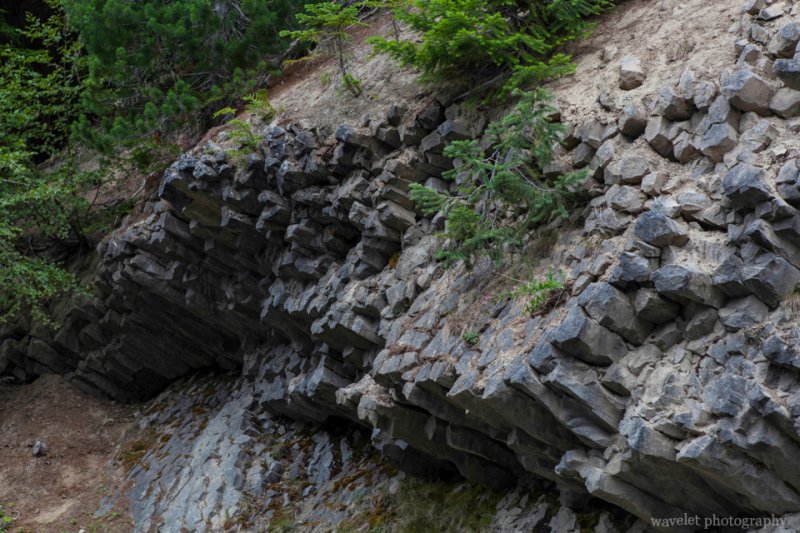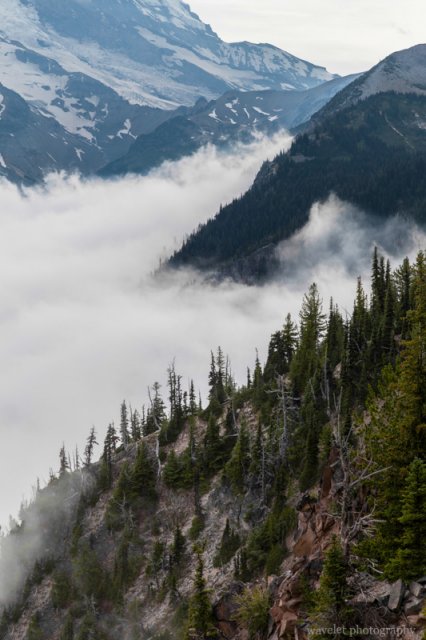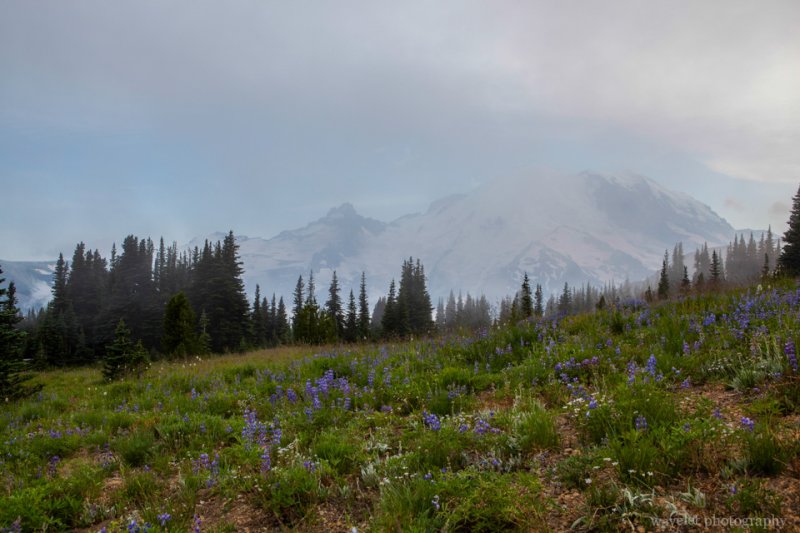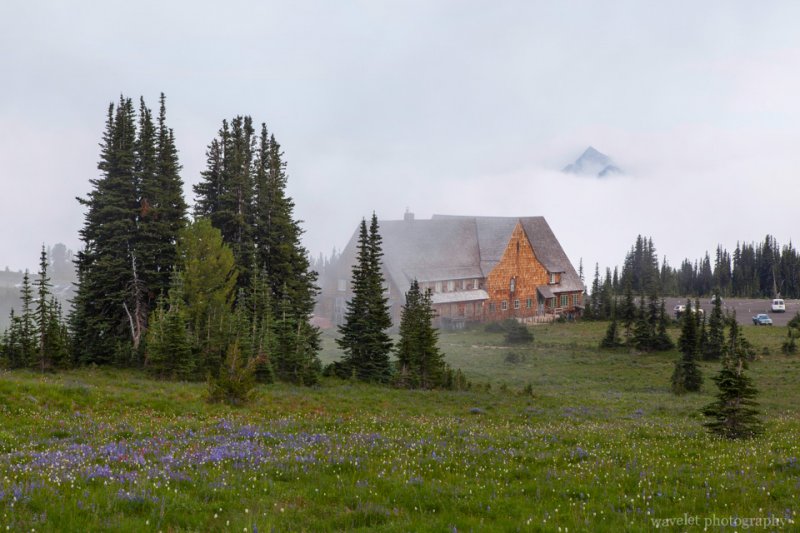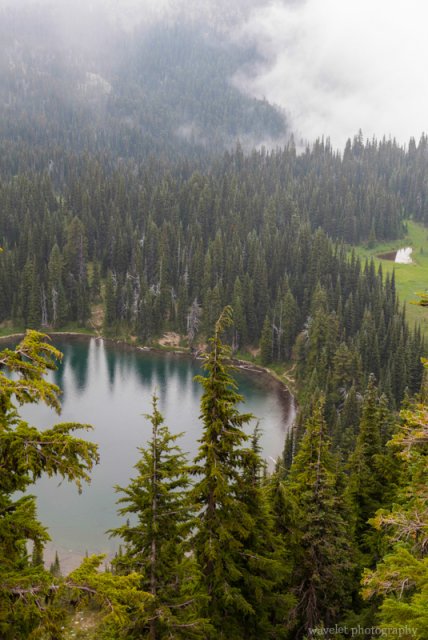Eastern Canada and Maine – Toronto
2013.9.27~28Compared with our other travel destinations, a trip to visit Eastern Canadian cities is definitely much less exotic. Our original plan was to go to Puerto Rico, but my in-laws preferred city tours. In the end, we had nice trip. Not only we spent some quality time with the family, but the fall color around Quebec and Maine was the best I had ever seen, and my father-in-law had an opportunity to show off his French speaking skills.
We had a hectic schedule for the first three days. We arrived at Toronto at 10pm on Oct. 27th. Without other customers, it took Hertz an hour to find a car for us, partly because they had to bring a car with an American plate for us as we’re gonna return the car at Boston. The cost was surprisingly cheap though. It’s almost midnight when we checked into our hotel, Westin Harbour Castle, but it’s still early in California time. We had some snacks at the restaurant on hotel’s first floor.
The hotel is located on the waterfront of Lake Ontario. Although we booked city-view rooms, the one we had was at the corner – The city lights was vibrant seeing from one window, and we had a partial view of the lake from the other.
The second day morning, sunrise behind the cloud over Lake Ontario was quite dramatic. As usual, I had a morning walk around the hotel, mostly trying to find out how long it would take to walk to the CN tower. It’s the Saturday morning. Not many pedestrians on the street, but there were a lot of constructions going on under the highway overpass.
CN Tower
I bought a hot-dog on a food stand by the hotel on my way back. After a quick breakfast, we were heading to the CN tower. It’s Saturday, we were worried that the line could be long so we made it our first destination. It’s a 20-minute walk from the hotel. As we got there at 9:30am, there was no line at all. If we hadn’t reserved the tickets online, we could buy the tickets right away. Instead, because I never received the tickets they were supposed to mail to me after the reservation, we had to wait at the entrance for 10 minutes while they were getting our tickets somewhere in the office.
The security check was quite rigorous. As I passed through a security gate, the gate shot out air steams continuously from multiple directions – I don’t know what it’s used for. Like other attractions, right after passing the entrance, there is a photo spot that visitors are photographed against a wall featuring CN tower overlooking the city.
It only takes a minute to reach the LookOut level at a height of 346 meter. Half side of the floor is taken by the Horizons Restaurant. Through the glass window of the other half, the view of the west side of the city and Lake Ontario was fascinating, Unfortunately, we only had the clear view for less than 5 minutes before the cloud moved in. Standing on top of the cloud, we couldn’t see anything.
Going one level down, you can walk to the outside and around the tower at the Outdoor SkyTerrace, and have a 360 degree view of the city, but your sight will be cluttered by the wire fence. The most interesting feature of CN tower is the Glass Floor. With a view 342-meter straight down, even I knew it’s absolutely safe, my first several steps were very cautious.
City Hall
We took taxi to the city hall and walked through the square. The city hall was opened in 1965 to replace the old city hall next to it across the street. The architecture is impressive and futuristic, especially considering that it’s built 50 years ago,
Eaton Centre and Yonge Street
Next to the Old City Hall is Toronto’s most popular tourist attraction, Eaton Centre Shopping Mall. As one of the most successful stores of Eaton’s chain since its opening in 1977, Eaton Centre is so profitable that it’s said that it had been keeping Eaton’s business alive for 20 years until it went bankrupt in 1999. Eaton Centre retained its name and today, it’s still one of North America’s top shopping destinations.
We made a brief stop at Eaton Centre and walked back to our hotel along Yonge Street. Yonge Street is famed to be the longest street in the world. It’s southern end is mostly taken by bank and office buildings.
Island Ferry
What we planed to do next was to take the ferry to Toronto Islands. The ferry to the Centre Island runs every half an hour, while to Hanlan’s Point and Ward’s Island is once every an hour. The dock is right next to our hotel. We checked out of the hotel and asked the bell desk to store our bags. We planed to take the ferry at 1pm. Although there were already many people waiting before the door was opened, the boat is big enough to get everyone on board.
You should go to the second deck and stay at the very rear of the boat for the best view of the city when the ship is leaving for the island. Toronto’s skyline is one of the best!
It takes about 10 minutes for the ferry to get to the Centre Island. We spend only an hour on the island and walked through the park to the lake shore. Summer had passed. Not many people on the Manitou Beach.
It’s said that Toronto has the best Chinese food outside of Eastern Asia. It could very much be true. We went to 辛香汇 at Thornhill. Definitely much better than Northern California. There were many new dishes that were recently introduced from China. We ordered a lot of food, there would be no Chinese food in the next several days.
We resupplied at T & T Supermarket (大统华) and it’s well over 4pm as we left Toronto. We’d drive 5 hours and stay overnight at Ottawa. Dark soon fell. We made a stop at Kingston, having a coffee and refreshing ourselves. My father-in-law played Chinese songs stored in his cell phone to keep us entertained for the last two hours of the trip. At almost 11pm, we checked into Sheraton Hotel at downtown Ottawa.
